Larry's Lesson Pt 2
Larry's Lesson Part 2
With their arm pushing against the shaft.
That's not what you're really trying to do.
Because that's just going to keep driving the club through and it's going to release late.
If you think about throwing with your hand to extend that wrist, to widen that angle, with that pressure point in your fingers, you have to have a lighter grip.
You can, I'm not saying you can't hold on to it firm, but you can't be death gripping it to where your wrist is locked up, because then the only thing you have left is to push with your arm and shoulder, which is going to make you rotate, which is going to make the club release later.
So now try to get the club in your fingers a little bit more of the right hand and strengthen the left hand just a little bit.
Because that'll give you a little bit more leverage.
And then as you go back, start feeling the club head kind of doing this.
Get your wrists to swing back and forth.
So you'll see I'm kind of moving full release.
just to get the feeling of what my hands are supposed to do.
And I'll feel if I'm really tight, my shoulders are going to have to turn through.
If I'm a little bit looser, so I can move faster, now my shoulders aren't turning.
I'm just releasing my hands.
So now, I can throw it from my fingers back here, and it releases back here.
So feel it in your fingers.
Yeah, there you go.
So now you're gonna start paying a lot more attention to how you put your right hand on the club.
Yeah, because I know before I was just, okay, I'm gonna get strong.
Exactly.
Exactly.
Yeah, so now the way that the club sits in the cradle of these fingers and up against this point, this is everything.
Because now as you go to the top, you can feel it.
Oh, I can feel that club head there.
There you go.
Yeah.
Notice when you do it, you're looking at the screen in front of you.
And when I did it, I was looking down at the ground.
There.
Feel how the timing is better?
Yep, feel those fingers in your right hand.
There you go.
Note your follow through there.
Watch me for a second.
So when you come through, the reason it releases just a little bit late is you're doing this.
You're still turning through.
What you need to visualize is you're trying to do everything back here.
Your body's staying back here.
Your chest is staying pointed back here for right now in order to get that club back out in front of you.
But if you start doing this.
It drags the shoulders.
The shoulders drag the hands and arms and the club in late.
So instead of trying to turn through, throw it back here.
And then I'm pulled around to follow through.
But I'm never trying to turn through.
I am trying to stay back here, throw the club at you, keep my chest looking at you.
And then I just get pulled around to a nice, relaxed follow through.
That's the feeling.
There you go.
See how your shoulders were more relaxed that time in the follow through?
There.
Better.
That felt a little better.
We're getting there.
You know, you talked about me doing this.
Yeah.
It doesn't feel like I'm doing that yet.
Yeah, yeah.
It feels like I'm, it's probably better than it was, but it's not feeling like when you were just there.
Wide with that right arm.
So one of the things that's going to make this hard is that as you go back, yeah, see, your right arm is still really folded there.
So go ahead and set it up for me again.
Alright, so now, I don't want to give you too much to think about, but I'm going to have to give you something that's a little bit more of a mechanical thing here.
And you're doing it well there.
The way that you keep this arm straight, if you start activating this arm off the ball too much, it'll bend right away, and then your wrist will bend, and you'll get too much deviation.
The trick to having a simple backswing is taking this left shoulder and having that move everything in the backswing.
So now look, you've already made an 80 degree turn.
And your takeaway is not even done right?
And now you keep pushing that shoulder, don't do anything with your arms, keep taking that shoulder across there, that's a full shoulder turn.
Yeah, and now your body, your pressure would already be going back to the left, yeah, and then the arms would be going, but they'd be getting pulled down.
So what you tend to do, and this is where the golf swing will always fall apart, is that you take it back and you fold this, And then you try and throw it, and it's so hard to get it to release properly, and you'll tend to throw it into the ground.
But now, if I take my left shoulder and I use that to push everything back, look how wide my wrist and my arms are still.
I'm doing this.
So now as I start to throw, I'm trying to get rid of way less angle than you are.
And that's the whole trick to this.
So use that left shoulder to drive everything back.
Yep.
So now you made an 80-degree turn.
And as you're doing this dynamically with speed, your arms would have a little momentum, they'd swing back, and then you'd have way less angle to get rid of in your right arm.
Exactly.
Like, where's optimal?
Is it like way out here?
You want to keep this puppy as wide as you can.
Okay.
Right?
And the only way you can do that is by not activating it.
As soon as you activate it, it's over, right?
Right.
What do you mean by activating it?
You activate any muscle and then you try to pick it up.
As soon as I start doing that?
Yeah, it's toast.
Okay.
And it can even start here.
When you start doing this, you'll feel your bicep want to engage.
Exactly.
So you want to keep that pretty quiet.
Yeah.
Yeah.
And then from there, it's way, way easier to get it released than from way back here.
Yeah, exactly.
It should feel more balanced.
All right.
So go back to the top.
Okay.
So now here's the trick to this.
Once you're here, you should feel muscles down the left side of your body stretching a little bit.
Okay.
Now the trick is what you're doing when it goes off a little bit.
Take a breather for a second because I know I'm wearing you out.
So the whole key to how all of this stuff really works together is really you have to use both sides of the body.
Right now, you're overusing the right, trying to get it to release, which we want to use it, but everything has to work together.
And what you need to think about in the swing is that basically, when one side's pulling, one side's pushing, and one side's pushing, one side needs to be pulling.
They have to work in opposing pairs, and they generally kind of do the exact opposite, right?
So if the right side's pulling back, the left side's pushing to help.
When you're going back, and you get here, this needs to then help pull you back down.
But instead, What you're doing is just throwing with your right arm and not using this to help pull everything back down.
So then you've all of a sudden, you're just going to be kind of looking like this, like you're a little out of seat.
Exactly.
You're just kind of going there and just throwing it with your arm, right?
So there's a balance, like the body has to work with the arms.
Okay.
So when I go back with this left shoulder, as I drive it down and back, I feel it here and these muscles want to go.
So then if these go really quickly, the quicker I can throw with my hands.
But if I go here and I just do that, it is, right?
But I can't give you like 50 ,000 things to think about, right?
So instead, as you start getting going back here, now you're going to start feeling, okay, my concentration with my body is feeling this because I want that to help me go back the other way.
And that helps widen the angle.
It helps pull the shaft down, pull the hands down, all that stuff.
So now as I'm here, then I can throw, and the swing is more balanced and synchronized.
It doesn't feel like that.
And this is where it has to happen, where it's difficult to learn, is that this stretch that you feel here, it's just there for a split second.
You've got to use it dynamically.
So go back to the top.
Now use this to pull everything back down.
Start unwinding.
There you go.
And as this is unwinding, this can throw, exactly.
But this has to start unwinding first to get everything going back.
And that's why when you look at what the greats all talked about, like Lee Trevino said, when you start that takeaway, the only thing that better be moving is your left shoulder.
That's how he thought about the swing.
Bobby Jones thought about left side.
Ben Hogan thought about left side during the takeaway.
People tend to kind of just use the right arm too much during the takeaway, and that's what causes that narrow, collapsed feel, and then you've got to huck it from the top, and everything feels really disjointed.
But the greats all looked really nice, wide.
They're stretching this.
They're pushing this back, and then that's really quick to bring everything back down.
So that's why Nicholas felt like he could throw it from the top as hard as he wanted, but he had a caveat, as long as I'm moving left.
Instead, what you're doing is here and just throwing without moving left.
Does that make sense?
Little closer.
So it's a little too much right side push still.
So right shoulder driving through.
A little closer.
How's that feel?
Yeah, it feels a little better.
Before it felt like I was just, like you said, I was going here and I was just trying to throw it.
Now it feels like I can pull a little bit through.
Exactly.
Both sides have to work together.
There you go.
You'll find when your left side of your body is helping pull to initiate the downswing, you'll be able to apply even more force and more speed to the shaft.
But it'll happen naturally.
You don't have to try it.
It's really about the timing of things.
And it really just comes down in a very similar way to a throw, okay?
If I was going to throw, the first thing I would do is take that step and rotate my hips, right?
And rotate my center of my body, my core.
you would feel that stretch, right?
That allows you to then throw harder with the right arm.
But if you just went like this, there's nothing there.
So as you get comfortable with this, you don't have to think about it so much, which will take a little bit of time.
But as you get more comfortable with this, this has to happen so fast.
It can't happen fast enough, this left side stretch.
So your back swing's got to be, like by the time you've had a chance to formulate a thought, you should already hit the ball.
That's how quickly that left side stretch has to be.
I stretch that left side, I have to get it all the way to there.
You do, yeah.
I have to get it all the way to there.
Yes.
Yeah, for sure.
Because there's no doubt when I start having trouble, I'm just like there.
I saw it immediately.
The first swing you made today was that, right?
I know that's the issue.
But again, if you don't understand why you want to do this, why you want to make a full shoulder turn, then you're not going to do it.
Better.
You're moving better.
There you go.
That still feels way better.
Yeah, it's a lot better.
I feel like I have a long ways to go, but it feels a lot better.
You're making a much better backswing, much more full swing.
Use that left side pull.
A little bit more.
So, we're on the spot.
So, take a breather for a second.
One of the things I'm going to have you work on is that Tiger Challenge drill.
I don't know if you saw that on the website.
I don't remember.
Okay, so just, I think it was last week, I posted it.
It's just a clip of him hitting an eight iron, right?
And it looks so smooth and so effortless.
It's just like he's not doing anything.
He's just.
Puring these eight irons, 165 yards, right?
And part of the key to it, a big part of the key, is dynamic stretching.
The way that you stretch the muscle and then it naturally, called stretch shortening cycle, it wants to rebound back.
That's the real secret to effortless golf, if you really want to understand it, Is that I've got to stretch these muscles?
And then they will hold that tension and want to spring back for just a split second.
And if I lose that timing window, then I have to apply force some other way.
That's what's happening to you.
You go back and you almost kind of pause at the top.
And it's not really a pause, but you kind of slow down.
And then that stretch shortening cycle is gone.
And then you have to fire really hard with your right side.
And that's why you kind of feel like, I got to kind of turn, or I got to do something really hard with my right arm or something to get that speed.
Instead of feeling like it's, oh shit, it's kind of pulled me through.
It has to be both, right?
So it's.
Either here and then or and then I get ripped through and that's what you're looking for.
So that's why they have to work together that throwing motion and pulling motion are kind of one in the same.
Just like they would be if, as a pitcher was turning his hips right.
They have to do both the easiest way, I think, to kind of start feeling that again.
A big part of it is just getting this left shoulder to go down.
And in this way so that you feel the stretch in the left side of your body, your obliques that are going to help fire that trigger.
But you have to truly go fast, you really, you cannot go to the top, pause and go.
Some guys can do that and they're just like super athletic and can go here and then really fire everything.
But most of us, we're not that coordinated, and it doesn't have to be that way, right?
I want my swing to be kind of on automatic as much as I can.
The less I think, the better I play.
And especially is true in the backswing.
If I'm not thinking anything on the backswing, I will always play way better than I have any backswing thoughts.
Because it just makes everything start to trigger automatically.
And you take advantage of the things that are built into our muscle fibers.
And that's what we want to do.
So I'm going to have this in a moment.
I'm going to put that up there.
You're just going to swing.
I'll put it up on the screen.
And you're just going to try to match his pace.
And you're going to be so far behind, it's not even going to be funny.
But this is an eye-opener to realize.
Because you're going to watch him be like, he's barely swinging.
But how's he hitting it so much further?
And this is going to help you start to understand how that works.
Okay, so take a breather for a second because it is going to be tiring.
I've never been able to play golf without thinking about my golf swing.
It's never.
I'm always thinking about something and I know it's not good, but I don't know.
I just I'm just not a natural.
You know, I didn't start until I was 25 as a hockey player, and I never was.
I just never was taught how to play golf ever.
Well, I have lessons, don't get me wrong, I've had lots of lessons since, but Not many people really understand the golf swing.
I haven't met anybody that does that.
You're lucky to find one.
I've had two instructors in my life that really, well, Chris helped me, but I didn't see them very much.
I really only had a couple of instructors ever that really helped me.
It felt, oh, that feels like easy.
It's such a simple, complicated thing.
It is.
It's really simple and complicated.
It is.
The whole trick, and this is what this whole Goat code study a bit has been about.
For me is like, when I started, I've always been a huge fan.
I learned how to play golf on Jack Nicholas Golf My Way tapes.
It's like when I was a kid, I burned those VCR tapes and used them daily.
And then, of course, Tiger came around.
I was just like, I want to swing like that guy, right?
And as I started studying the goats.
And of course, I read Hogan's book and all of Bobby Jones's videos and all that stuff, and I loved them.
All.
I'm like, but when they describe the swing, it's so annoyingly simple.
It's, oh, I just feel this.
I just do this.
And I'm like, well, are they just naturally born with it?
I don't personally really believe in that kind of stuff.
I mean, certainly talent plays a role in things, for sure.
I'm never going to run like Usain Bolt.
But I can hit a ball with a stick like Tiger Woods.
It's not doing anything complicated, right?
So I'm just going to play this video.
And I just want you to watch it for a minute.
Just to internalize the feel of his swing.
Yeah, it looks like he's going so slow.
Super slow, right?
It does.
I know he isn't, but it looks like it.
There's nothing in that.
There's no strain on the body.
No.
There's no complicated mechanics.
There's nothing here.
Anybody is capable of swinging something like this in the ballpark, okay?
So you're going to see there's a countdown timer.
And that countdown timer is going to be kind of your cue to like get ready.
So when the one goes away, you start your swing.
Okay.
And then you're going to go, it's going to go three, two, one, pull the trigger and go.
And I don't, you don't have to hit balls on anything.
I just want you to try and match the pace.
That's it.
You can turn and face the TV too.
Yeah.
Yeah, just don't hit the force plate and you'll be fine.
All right, are you ready?
Okay, get ready.
How'd you do?
Well, I think I was releasing a little late, but not bad.
And if the swing felt pretty good.
Okay.
I mean, it felt, it didn't feel like I was fighting it.
Okay.
It felt like the club was doing a little more work.
Good, good.
You know what I mean?
It will happen naturally as you start moving in the right sequence.
And the only way you can have the right sequence is the right speed.
Yeah.
You have to have a, I'm not saying you have to have a fast tempo, but in my.
20 something years of teaching golf, 20 almost 30 years, 28 years teaching.
Never do I have amateurs that swing too quick.
They're always too slow, they're always too slow going back.
They're too slow to start down all of this stuff because they're thinking, Too much.
They're thinking through like 80,000 different things in a pre-flight checklist.
And of course you can't play golf.
You wouldn't do any other athletic sport like that in the world, right?
Golf is the only one that we try to make an exception for.
But it doesn't get to buck the rules.
It has to play by the same stuff, okay?
So what you'll find there, and I'll show you again in a moment.
I'm going to have you do this again.
But your downswing always started late.
And that's what happens in everybody's case.
So everybody has the same thing.
So now, okay, if the downswing starts late, what's really happening there?
And what you're going to find is it's just always excess movement.
The reason that Tiger's able to start down so quick, and again, it doesn't look like it, but it's really, really fast, is he doesn't have any excess movement, which means no excess right arm bolt.
Because if I go to the top and I make a good turn, and then I'm like, okay, well, now I'm going to load this arm up.
That's a lot of time and travel and space for my hands to go.
Same thing with my wrist.
I add a lot of wrist movement.
That's a lot of time.
And you'll find that you're just like, you're not going to match it.
So now I'm going to get behind you.
I'm going to video you going through this.
And we're going to go back and look at it on my phone and see where your pace really is.
All right.
Nope, nope, nope.
Just swing.
Yeah, so just face the TV.
And let me hop behind you here real quick.
And we're going to video it.
Yeah, catch the next one.
Here he goes.
Pretty good.
You got a head start on his takeaway.
You cheated.
That's okay.
That's okay.
But what you're starting to get there.
But it felt like I was getting closer to the right release point.
Exactly.
It felt like it.
Without you trying to think about releasing at this point.
Exactly.
Yeah.
This is the whole point of this.
Why you should just burn this in your brain and watch this every night.
Okay.
To start getting like, and just stand in front of the TV and just make practice swings until you realize, I can't, I don't have time to think.
There's no time to think.
Yeah.
I don't know if you tried to think there, but it's just like, it's not going to happen.
No, I was thinking about just, just getting, turning and getting, just.
I was just trying to swing like that faster rhythm or just getting back and going.
Exactly.
And that's all there's time for in the swing.
That's literally it.
You have no time to try and set your wrist this way or do this or whatever.
To swing is the fast.
And if you put Ernie Els next to him, it's as slow and languid as Ernie Els swing is.
His tempo and Tiger's tempo are like identical.
They're swinging at the same pace.
So it's not, it's an illusion, the way we look at things.
And then we translate it into our brain like, oh, I'm going to swing like Ernie Els.
Well, there's a video of Mo Norman and the guy's timing his swing, driver, and just doing pitch shots.
From ball to ball, his driver and pitch were the same to a thousandth of a second.
Yeah.
So he did a little pitch shot.
And that from there to there was the same as this full driver.
Exactly the same.
It's identical.
There's a video of Rory McIlroy on Instagram right now of a driver and an eight iron.
And from takeaway to impact is exactly the same.
To the same frame.
But I was surprised that even the little pitch shot was exactly the same.
Exactly.
It's the same thing.
You can't pitch like this.
You're not going to be able to coordinate the motion.
It's just like walking.
It's like trying to think through walking.
You're like, okay, I got to move this hip flexor and extend this quad.
It doesn't work.
And this is where golf doesn't have to be that hard.
It's really not.
Once you start understanding some really basic things about what you're really trying to do, you need to release the club with speed down here.
And you need to set everything up in your backswing to make that happen easier.
So by using this left shoulder, like Trevino talked about, to help push everything back, it keeps you from trying to pick the club up with your right arm and bicep.
Because as soon as you do that, you're always going to swing too long.
And then if you're swinging too long, you're going to start down too late.
And then all of a sudden you're discombobulated.
But when you swing back with some pace, there's just not enough time to screw it up.
The club's going to have way less time to go off plane.
And if you're truly matching his pace, you will have to start swinging on plane naturally.
Because if you start taking the club back, like so many people do, you start going back like this.
By the time you get up here, he's already hit the ball.
There's just no time.
So you're going to realize, okay, Without me talking to you about swing mechanics at all and playing and your hands and your wrists and all this stuff, you're going to have to realize like, well, I can't do that.
I just got to be there and go.
There's just not enough time.
And so now as you start kind of getting the feel for this idea of my arms just kind of have to stay really wide.
And that's what Tiger does perhaps better than anybody.
When you look at his swing.
As he's going back, he looks like this all the way to the top.
Yeah, exactly.
So now that you know how to move the club back with this, that allows your arms to stay straight longer.
And that's kind of your focus point.
I got to move this quick, get this dynamic stretch, let that pull me back.
If you've ever read Hogan's book, he liked the idea of, he imagined there was a rubber band attached to the left side of his body to a wall back behind him.
And so when he went back this way, it stretched that rubber band and then it snapped back.
Is how he thought about his downswing.
Because that makes everything fire on automatic.
So as long as I'm, you know, transferring weight, If I'm doing like you're talking about, my left shoulder gets back here, my hips are going to have to be turning into a better position.
They have to.
Without even me thinking about it.
Exactly.
Because sometimes I'm thinking about, okay, I've got to get those hips turned.
It just doesn't work.
It doesn't work like that.
I like to think of the way that Trevino put it.
The only thing moving in the takeaway is your left shoulder.
That's how he kind of phrased it.
Of course, that's not true.
but our brains can't think about anything more than that, right?
So now if I focus on just getting this left shoulder to go down this way, look what happens to my hip.
I just move this.
Your hip's in the exact same position as mine, but we didn't try to move our hips.
Some golf, some people back in the day used to think like, well, Your legs are just kind of two pegs at your upper body, standing on, and your upper body's doing all the work.
And then golfers who swing like this say, well, that's not true.
My hips aren't working right.
If you have the right understanding, the right visual in your mind and the right sequence of things that you're trying to This stuff from here down will kind of take care of itself.
So if I go back with this left shoulder, it pulls my knee forward.
My knee, my hips go down because your left knee should be lower than your right knee.
Your left hip should be lower than your right hip at the top of the backswing, which makes it easier to shift my pressure, right?
So if I just do this with my left shoulder and I let that muscles that got stretched rebound me back, and my left shoulder is getting pulled around.
Well, my hips straightens up, my hips open, my leg straightens up.
But I never thought about any of those things because it's just not nearly enough time.
So that's a great way of thinking about how to get your body to move correctly.
Is this?
And let it rebound.
And if you're going fast enough, it's going to So that's kind of what I want you to try and feel next.
We're going to do this one more time.
And I want you to try and feel that dynamic stretch and just let it pull you because you're going to feel out of control.
which is not something that we try to kind of tend to want to avoid, But you need to let yourself kind of start moving really quickly in a way that you can't consciously control it.
All right, here we go.
Okay.
Let's do it again.
So what now?
What did you feel?
Well?
That one?
It felt like it was short.
Okay, that last one?
I didn't.
I didn't get the stretch.
I was kind of like, there and go, Yeah, yeah, I was only partially, I wasn't, I wasn't stretch.
I'm getting that rebound.
So what will happen when you do that?
And this is going to be your tendency because of how you've swung for so long.
Yeah, is when you feel that you're not going to turn your body, you're going to swing your arms.
And then you're going to feel out of discombobulated and you're going to huck it.
And you're not going to know what to do from there, what you're going to, when you're going to get it right, your arms are going to feel like they didn't do anything, and you're going to feel like this left shoulder drove everything back.
And the stretch is what you're focusing on, and then you can worry about your hands, but that's going to be the key.
As soon as you start moving your arms off the ball, your body won't move, it'll, your arms will take over and then you'll be late.
So show me one trying to get that stretch left shoulder going back.
That's great now, but we want we don't want to hold it, right?
Yeah, I want you to come down from there Okay, Try a few like that.
Little Armsy still relax your arms, relax your grip a little bit more, left shoulder back.
There you go a little better.
Let's do one little adjustment to this.
So when you're going back, again, what I want to kind of get in your mind is the concept of time in the golf swing.
Time is extremely precious and you've got very little of it.
And everything that you're doing in your swing, you kind of want to start understanding, how do I take things out of my swing that are making it take longer to happen?
So one of those things is if you have a pretty wide stance right now.
If I make this big wide stance and I make a shift to the right, well, that's physically going to take more time for me to get back over here.
So now what I'm going to have you do is a little drill to exaggerate this a little bit.
That'll make it easier for you to feel how to unwind the left side of your body.
So instead of taking this big wide stance, we're going to take a narrower stance.
And for right now, I'm going to have you just put all your weight on your lead side, like a stack and tilt kind of move.
Now go back and just.
You don't want to think about moving off the ball.
Your left foot's just going to unweight for a split second.
Yeah, there you go.
Now do it as quickly as you can back and through.
There you go.
Better.
Better.
I know that feels wildly fast, but we're good there.
Hang on the left side more.
I'm going to really exaggerate this.
There you go.
Be careful of swinging the club back with your arms.
Keep your arms straight.
Push the left shoulder down.
Okay, watch me for a second.
So when you went back there, you're kind of doing this, okay?
So what I want you to get the feel for, and again, the reason you're doing this is because your arms are kind of pulling you out of position.
If I took my right arm off the club for a second, and I just went back with my left shoulder, I'm here instead of here.
Yeah, there you go.
So now you should feel like this left knee kind of, instead of going back this way in the backswing, which is going to move you this way, you're going to feel like it just kind of comes forward.
Feel the difference?
Now in a real swing, this is a little bit of an exaggeration, of course, But what's really going to happen is that same feeling of you, kind of feeling like you're hanging on the left side while your left shoulder is going down.
It helps your shoulders get steeper, which is very important.
But what happens is instead of.
shifting here and then shifting here, what happens is I'm just barely off that left foot for a split second.
So it's more of an unweighting, not moving off the left foot to transfer weight to the right and then trying to move back.
It takes way too long.
That's why this kind of stack and tilt is hanging on the left side drill.
You're like, well, I'm already there, right?
So now it's way easier for me to turn and unwind with that left side of my body if I'm there.
And then in the real swing, I still kind of want to feel the same thing.
But of course, I let my pressure, you'll watch my feet.
They're moving very quickly this, but I feel like I'm hanging more here.
I'm not trying to do this.
Yep.
Hang on it.
There you go.
There.
Stay more on that left side.
Just really exaggerate it for a few.
Hang more on the left side.
Okay.
Let's make a little correction there.
First of all, what does that feel like to you compared to normal?
Well, it feels better, but it doesn't still feel like.
It's not where I'm.
feeling like the club is doing, I feel like I'm manufacturing too much speed.
It doesn't, still doesn't feel like the club is just going like pulling me through.
Yeah.
Yeah.
So what's happening here, as you go back, as you start coming down, you start kind of throwing your shoulders and arms at it in an inefficient way.
Okay.
This left side has to lead everything.
So if I don't, even if I'm hanging on this left side and I still kind of fire my arms, like your knee is kind of still bent at impact.
Right, if I pull this out of.
Oh, this stuff, yeah.
When he started in this position, that's what he felt.
I don't have to post up because I'm already extended.
Gotcha.
Whereas if you are here, you have to post up to get out of the way.
Gotcha, yeah.
I've been doing that for two years now, not posting up.
I see.
Plus, my hip got so sore when I was posting up, it just hurt really bad.
Gotcha.
But my left hip is replaced now.
Gotcha.
I don't feel anything.
Okay.
So I need to be posting up, too.
I've had a lot of people with hip replacements, thousands of students with hip replacements.
So, A, I know usually once it's replaced, they feel like a million bucks.
But the reason that people would generally hurt their hips is just not posting up correctly.
Right?
I mean, that's all that it comes down to.
So what you're going to start to feel is as my left shoulder goes down, and now I have this stretch, and I want that to turn and unwind me, it straightens my left leg.
Yeah.
I'm not trying to straighten my left leg, per se.
Exactly.
Watch that.
So do it again.
Your left shoulder goes down with your left shoulder.
And now use that.
It'll pull your left leg straight as your shoulders are unwinding there.
Okay.
Yeah, exactly.
There you go.
Good.
So that's why, like, Hanging on this side and then letting it straighten up is the feeling of what you're trying to do through impact.
What you're doing is kind of getting too far back here.
And then you throw your arms.
There's not enough time for you to shift.
And once you start throwing your arms, if you're back here, you'll stay back here.
Because you've got all this force pulling you this way.
Right?
That's why you've got to be this way and even going further left.
Better.
We're still late with our body rotation there.
Closer.
Getting there, how's that feel?
I feel like you're getting a little bit more of a whipping motion with the club.
It's so helpful.
This is like the best training aid is this simple video.
There you go.
I'm telling you, I posted that video up and it's only gotten like 14,000 views from members watching it.
And I'm like, you guys, this is gold.
If you just did this, you don't need me anymore.
Because that's one thing you talked about is by doing certain feelings, you automatically, your body does the right thing.
And that's what I need.
I can't make my body do the right thing and then feel it later.
It doesn't work.
It doesn't work.
It doesn't work.
That's what Green's Golf does.
They're just like position, position, positions with the body.
But it doesn't work that way.
I got to swing to get the right feeling and then my body's moving in the right way.
But they work on positions.
Positions, positions, which is fine, but I've done that.
That's what most talk said.
Yeah, he got, he had five or six positions, he had to hit them all.
And so that's what they teach to me.
I, I I think I put this in an email.
The right mechanics will sometimes translate to the right feel for a golfer, sometimes he'll be able to take those and and glue it together.
He's athletic enough, he has the right picture, he has enough natural movements, whatever he can make, those mechanics translate in the right feel.
But not always.
But the right feel will always translate to the right mechanics, or it's not the right feel.
This is it.
When you understand where that release needs to happen with something like that, where you get that feedback, you can hear it, you know right away, and then you know how fast you have to move, And there's just not enough time to do all this goofy shit that you're trying to do in your golf swing.
And then you understand where these little movements are coming from.
Speeds from here, this has to work together, and that's it.
That's really the whole thing.
And then you don't have to worry about 16 different positions, you know?
So get that left side to unwind quick, good, make a nice big turn.
Keep the right arm wide.
Good.
Let's hit a couple.
How was the sound?
I think it was on the money, wasn't it?
Pretty damn close.
There you go.
From where you started, where they were all super, super late to right there, it's a night day.
Well, even though it doesn't always feel super fluid, I am getting the timing down better and release better.
Yeah.
The fluidity is going to come with practice.
There you go.
All three of those were released at the right time.
So even if it doesn't feel perfect, You're still going to be able to hit good golf shots while you're getting used to adjusting to this field.
So much better.
So much better.
They're not for sale yet.
No, but I've been working with these.
Let me ask you a question.
Just honest feedback.
Okay.
So they have called this thing the tempo king.
What does that connotate to you?
If you see a training aid and you're on the golf channel and you say, You see this club, and they're like, hey, here's the Tempo King.
It's going to help you work on your tempo.
It means slowness.
It means slow, slow tempo.
That's what it means to me.
It's like.
I told you.
That's what it means.
Tempo to me.
You know, they talk about.
Because every time you see on TV, all the amateurs' tempo is so bad because they're just so quick.
And they're really not.
According to you, they're not quick at all.
They're like way too slow.
Exactly.
I don't know if I would call it the temple.
You're right, I don't think, I don't know.
You have to think about what you want to call it.
I, I, so I'm talking to these guys because I, they're great guys.
I love the training, it's it's brilliant and you can hit balls with it, and it's heavier to get a little more muscular speed.
Because once you pick that thing, everybody's like, Oh, dude, I got I can swing fast now, right?
And I said, call it the consistency king or the speed king, but not the tempo king.
Because everybody thinks tempo is slow and we're going back and forth on this.
But I just want to get your feedback, it's funny, you said the same thing, slower, slow, easy tempo.
Yeah, that's what it means to me, I, I, I think that's what it means to most golfers.
So like, I'm like, tempo, it's hard to define what tempo is, but what I.
What I told them I I would use it for is for teaching people.
Release?
It's almost like, yeah, it's like the snap factor.
Like you're trying to snap it at the right time.
Yeah, yeah, exactly.
It's just like there and.
Exactly.
That's what it sounds like.
To me, it teaches you how to produce speed by teaching you how to release it properly at the right time, which at the end of the day, it's the only thing that matters in golf.
You can do all sorts of other goofy stuff, but if you release it the right way at the right time, you're going to be all right, you know?
So yeah, we're going back and forth on this, but I'll have to send him a clip of this.
You're becoming a golfer, Larry.
Absolutely.
Well, we've only been going an hour and a half, so we're ahead of the curve.
There you go.
As you get comfortable with this, That's when those pressure points in your right hand are going to start becoming more valuable to you and make more sense.
Because right now you're having to think too much stuff.
You're taking a lesson.
There's too much stuff to think about.
But as you start getting comfortable, when your left side starts firing more naturally, then you'll be like, Now I can just start focusing on the feeling in my fingers and my right hand once your body starts moving correctly.
A little different timing there.
It's still not there.
I know it doesn't quite feel like I'm getting just enough.
You don't have enough left side.
The left side's not helping.
Not enough, yeah.
That's why, like, when you're going out and practicing, just practice hanging on the left side and clearing that out of the way as quickly as you can.
There you go.
Yep.
Sometimes it's confusing because, you know, I'm.
I feel like I'm more right hand dominant, but when I hit more with my left side, it feels like it goes straighter and easier.
Left side's pulling.
It stabilizes the club.
But you've been talking about right side down versus left side.
That's still not quite clear to me.
Yeah, so let me explain that real quick because it is confusing.
Right side dominant or left side dominant?
There are simple little things.
It depends on how far you want to swing the pendulum.
If you want to be really right side dominant, it's not really a golf swing if you're just using nothing but your right arm.
If you want to be really left side dominant, you're not going to have any power.
What rotary swing was always about, like I did my first throw the ball drill in like 2009, right?
So a long, long time ago is I've always added right arm.
It's just how much of that you want to add.
But that doesn't mean when you start adding right arm, that your left side of your body just doesn't do anything.
it'll block you and it'll be in the way.
So it's a matter of how much you want to feel that, But you don't throw away all the fundamentals of the golf swing that have been there for eternity, as far as how the left side has to clear out of the way.
Like Ben Hogan, if you read his book, I don't know if you've ever read it or not, but the entire book is about don't do anything with your right arm or hand.
He called them swing wreckers.
They'll destroy the swing.
Bobby Jones said the same thing.
But then Ben Hogan also said, At impact, I wish I had three right hands.
Right?
This is the kind of confusion stuff that goes on in the golf swing.
The reason that you can feel that you wish that you had three right hands in the golf swing is because this side is clearing out so well.
If it's clearing out of the way, you can hit with the right arm as much as you want.
But if this is blocking you, it's not going to work.
So that's why there's so much confusion about this stuff is that it's not.
All right arm or just left arm?
or why don't you just take that one off and just play with your right arm?
It doesn't work like that.
This left side still has to clear to help make room for this.
It helps speed this up.
Just like in a throwing motion, I mean, I honestly, I don't think a throwing motion in the golf swing is exactly the same because you have two hands on it.
If you're, if you were to throw a baseball like this, you wouldn't throw it like this.
Because you don't have that much freedom of movement in your right arm when this is attached to it, right?
So they have to work together, it's just a matter of.
A lot of times, people want to feel one thing more than the other, and all of them can work, right?
Tiger Woods talks exclusively about his right hand.
I've never heard him talk about his left hand, like hardly at all.
He doesn't think about it, but he's used it properly since he was five years old.
He doesn't have to think about it.
This is what I'm trying to get with you.
Once you have this working, then you can focus on this thing.
But if you just did this, it's going to throw everything off.
They all have to work together.
Well, it's my fault for not doing a better job explaining it, I'm sure.
Yeah, get that left shoulder.
No, don't try trying to pick your arms up.
Keep moving that left shoulder.
Keep moving the left shoulder.
Yeah, you don't even try to.
The last thing you need to try and do is get your arms to go to the top of your backswing.
You just leave them where they are.
I promise you, if you tried to keep them in your takeaway position and you kept moving the left shoulder, they're going to go where we want them to.
The number one guy in the world, he doesn't really use any wrist cock.
None.
Scotty Scheffler's like this at the top.
He's like that.
But I guarantee you he's turning.
Oh yeah, he's turning.
But he has tremendous speed and his feet are moving all over.
But he just turned and then just.
The more consistent you want to be, the more you're going to move your body and the less you're going to move your hands.
The timing is there, and the more you get that left side working, which is, again, I think the best way for you to feel that is to exaggerate hanging on the left side, because if you're already there, and just do one, actually, put 100% of your weight on your left foot, and now just pivot around that left foot the entire backswing.
You see how you can clear quicker?
Yeah.
You're not waiting to get back.
Because I can clear, I can.
Then you can throw harder.
I can throw down.
Exactly.
That's it.
Yeah.
So don't be afraid to hit balls and just hang on the left side, exaggerate it until you get the feeling of it, and then you'll start being able to balance it out.
Yeah, didn't have quite the turn.
It's too much arm swing, not enough left side.
So you really want to try to feel that you're driving that left shoulder back and turning your body, keeping your arms wide.
And the more that you feel that, so like that whipping feeling that you're chasing, where you want to feel that effortless feel, it comes from these staying wide.
The moment that you get them narrow, you narrow up your arc.
And that costs you speed with this free speed in the golf swing.
So the moment you fold that right arm by stopping your turn and trying to pick your arms up, now you've got to apply muscular force to get this arm straightened back out.
Otherwise, you're screwed.
You're not going to be able to make contact.
Exactly.
Yep, just keep turning.
Keep turning that left shoulder.
And then as you unwind that really quickly, That club is going to whip through and you're just going to be able to sling it through with your fingers.
Pretty good?
Yeah.
I'm starting to understand more how I need to feel.
Exactly.
That's the goal.
There you go now, look at your finish.
Your finish is more here instead of Where you were before.
Like, fighting everything and muscling it through, you're starting to swing it.
The wider you are with your arms, the better you turn, the easier this is gonna be on the body.
There you go.
Way better golf swing.
Way better.
You know, sometimes I get lucky and I do that and I say, wow, you've got 240.
What did I do?
One time I hit a ball.
I was feeling like I was going just way out here.
Yeah.
And I hit a ball and I was looking for it.
It was 50 yards farther than I ever hit it.
And it didn't feel like any effort.
It was like 295.
Yeah.
That was literally 50 yards longer.
It felt like I didn't even hit it, but I couldn't figure out what I did.
That's the trick, right?
You make a turn, you stay wide, your body helps, and then you can throw.
There you go.
That feels a lot better.
Well, for an hour and 40 minutes in, We're doing all right.
And we're not sitting here working on mechanical static position stuff, you know.
I know, it just doesn't work.
Being a former PE teacher, I understand a lot of different things about movement.
Yeah.
Wide, turn those shoulders.
Good.
That's a lot better.
I mean, it's still not there.
Well, the thing is you have the formula now.
It's this left side stretch is so important going back.
It helps you stay wide with your arms.
You're not going to feel like the need to load them up.
And then the quicker you get it, the faster that fires and the more you start to get to focus on what your hands are doing.
But your body has to clear out of the way first.
Not yet, right?
Because you've got to get this thing going.
And once this is working and you get filled with that, then you're like, okay, now I can start paying attention to the sensitivity thing, the little pressure points, how I want to shape the shot, whatever I want to do.
That's the.
It's a rumor that I've been told.
Oh, yeah.
I bet you could probably hit a fade right now.
I could teach you how to do it very easily.
That actually started a little right.
Yeah, well, actually, when I started working on your stuff, yeah, then I did start.
Yeah.
Even though I wasn't doing all the right things, it was, you know, I've been working on some of the things that you did.
And actually, one round, before my surgery, I've been averaging six greens in regulation.
Oh, my gosh.
Oh, yeah?
I shot 78.
Nice! Yes, and I shot seven.
I always felt I got to get at least 50% of the greens regulation.
Yeah.
But I'm hitting it so short that it's difficult.
It's so hard.
It's so hard.
Yeah, I don't play from the back tees.
I only play from the middle tees.
Do you feel like you're able to pick up speed swinging this way compared to before?
Yeah.
Oh, yeah.
Because before, with a shut face, you couldn't add any release in there.
No.
You'd just hook it off the planet.
Yeah.
Now you should feel like you don't need to take it back.
Ever since I was young, when I was done, you know, I played hockey growing up.
When I started playing golf, I never felt like I could swing hard.
Yeah.
Because if I swung hard, it just hooked more.
Yeah, yeah.
You've been doing like this your whole time.
I didn't as far as I did when I was 25.
No kidding.
Because I never swung hard then.
Yeah, you couldn't.
If I swung hard, I literally would just hook.
So I don't have to swing super easy all the time.
Oh, that's frustrating.
I hate that feel.
I want to be able to pummel that thing.
Even on your takeaway there, you're bowing your wrist so much less than before because it doesn't make sense.
I want to record one because it looks great.
Yeah, just stay nice and wide.
I'm ready.
Let's take a look at this.
All right.
I'm going to take a look at this one here.
You still bowed at that time.
But you're recovering there.
You're actually in a great spot at the top.
If you look at your left wrist there.
And your turn is bigger, but we still need more, right?
You're still trying to.
Yeah.
You just.
And when I say you need more, what I really mean is you need less arm swing and you will turn more by default.
It's because I'm still not getting a wide enough.
My hand should be more up here somewhere.
Well, look at your right arm.
It's just totally bent, right?
It's already 90 degrees.
The average Tour Pro at the top of their swing is only bending their right arm, like maybe 70 to 90 degrees.
You're bending at 90 down here, so by the time it gets up here, it's 120, Which again, Means that's just that much more stuff you've got to try and get rid of as you're coming down into impact.
It's a timing game.
We don't have that kind of time.
The more that this left shoulder helps drive everything back, the less you feel the need to do anything with this.
As that happens, as this turns more, it stretches this more, which makes it fire faster.
which makes it all of this stuff take care of itself.
So should I be more like right there?
Yeah, yeah, exactly.
And you want to feel, I always tell people, keep your right arm straight throughout the entire swing.
You can't do it.
No.
Right.
But feel that you're just, it never bends.
Because I do, I have a mirror and everything I can work.
So I should just be there.
Well, what I want you to be careful.
I feel like I'm pulling with my right hand there a little bit, though.
And that's why it's folding.
That's why it's folding.
It's got to be this.
My right hand can't be doing anything.
I've never heard any of the greats talk about anything positive about using the right arm or shoulder, ever.
Right hand, right fingers, yes.
Right wrist, sure.
Right arm and shoulder, nothing.
Never.
I'm sure somebody has said something, but I've never seen it.
Right?
So it's left shoulder going back.
That right arm staying nice and relaxed.
Again, think of how you'd throw a ball.
If you're going to throw a ball, you're going to use momentum to swing your arm back.
You're not going to pick it up and get tight with your arm.
It doesn't make any sense.
That was a really good baseball pitcher.
You know this motion, right?
Yeah, definitely.
So it doesn't make sense.
The golf swing is tough because, again, we're moving too slow.
And if you're moving that clip, and this is what I was going to tell you about practicing in the mirror.
I want you to be careful with that.
The mirror is super valuable, but it can also.
Completely destroy what you're trying to do.
Because if you go to the top and stop, you have to fire this right bicep and you have to fire this front delt.
Exactly.
So it's going to just train your brain to pick these things up and start using them too aggressively, and then you lose the whole swinging feel of the golf swing.
Okay, Good, but you could be still pushing that club back more with the left shoulder.
You picked it up with the right bicep too much.
Good.
That's always going to be your right bicep firing too much.
Yeah, you're going to pick it up.
Drive it back with the left shoulder.
Push everything back with the left shoulder.
And as you keep practicing this, it'll become more and more natural.
Because what you'll find is that this, when you get too narrow, like you did better, but you still got a little bent, and then you were kind of like this.
Then you kind of have to do some stuff with your right arm to get the club back out in front.
But what you'll find is it kills the left side.
It makes it where you don't want to fire because this starts going, right?
So what you're going to find is that as you start getting more comfortable, this dynamic stretch is going to be really, really important.
and that it'll let your arms stay more relaxed.
But as you start getting that feel for it, That's what I want you to start trying to pay attention to is if you stretch this left side properly, it should fire very quickly.
You shouldn't be able to stay there very long.
You shouldn't even be able to go back very far.
You should feel like that's almost restricting you.
But don't stop on the way down.
Fire it.
Better.
Let's do it again.
Just your left.
Focus just on your left side.
Stretch it and fire it.
Still a little right side push.
So I'm going to do a little thing here to help you out just a little bit.
Go ahead and go back.
Do you feel how the little more stretch there?
Okay.
Again.
Feel it there?
See how you're getting through quicker?
Two on that left side.
You're going back and then you start to pick this up and it pulls the left hip out of position.
Whereas if you kind of feel like, if you watch in the mirror, watch me for a second.
So watch there.
Here's what you're doing.
Just a little bit as you pick this up, right?
But if I'm here, it looks like my left hip never moves.
You see that?
But it's moving this way.
Yeah.
Any lateral movement that I'm going to have in my swing, if I want a little lateral shift, which is totally fine, it happens like almost before I start the club back.
But if I'm doing it while I'm making a backswing, now I got to somehow do that.
It's too late.
So what you want to see in the mirror is that it looks like your left hip never moves.
To me, from my perspective, it looked like my left hip never moved.
But I know it's turned 45 degrees.
It just didn't go this way.
Does that make sense?
That's why kind of hanging that feeling of hanging.
Now, watch your left hip in the mirror and get it to where it looked like.
It never moves that way or that way.
Now you see how you're already there.
Closer, yeah.
So just bring it forward as you come back.
There you go.
So now you can see that you're already there, right?
But in the real swing, you got momentum going this way, so you would kind of unweight that foot for just a split second.
And then you'd already be on your left side.
So that feeling of just kind of doing that will help you a ton to make your transition happen at the right time.
A little better.
Let's do this for me.
If you were, throw the club down for a second.
If I said you had left hand only, and I said you have to throw a frisbee with your left hand only as far as you can, I don't care where it goes, but you had to throw as far as you can, how would you do that?
Try a couple.
So that's a lot of just arm by itself.
A little better.
So that's still doing this.
What I would do if I was going to throw a frisbee as hard as I could, is I would be moving back while my hips are actually going this way.
I wouldn't be trying to fire that.
There, yep, that's it.
There you go.
Do you feel how this is twisting, turning now to get that arm some help?
What you were doing before was just trying to pull with your left arm, which is you just don't have enough muscle back in the back delt to try and get any speed there.
So I can do that, but it's not going to feel very powerful.
But instead, if I was doing, trying to feel like I'm turning and moving my hips before my arm starts coming down, yep, exactly.
Now the trick to that is, is as the arm's going back, I'm starting to get ready.
I need to be getting ready to go back to the left, like immediately on the backswing.
So if you look at the, there's a video on the site called the four pressure shifts.
And what I'm showing there is that there's a little push off the left to start and then they go back.
The tour pros do.
But by the time their arms are like at the takeaway or a little bit to nine o'clock, all of the pressure they're going to shift to the right is already done.
And now they're starting to what we call recenter and move back to the left immediately.
Whereas what you're doing is you're going back here and then coming down everything together as one.
Exactly.
So that's why I was saying like with a Frisbee or like a baseball, you know your right arm's going back while my hips are going this way.
Right?
So my hips are opening while my arm's still going this way.
The left-hand Frisbee drill.
Same thing.
My hips are going first.
Yep.
And it's not a huge amount.
It's just a little dynamic stretch.
But it helps get everything firing sooner.
and gets the sequence down.
You don't have to try and like twist your hips wide open or anything like that.
There you go.
It's just feeling that little dynamic movement of your hands still going this way, while your hips are going this way.
And it's a hard thing at first, because we really kind of want to just make everything stuck together.
But this will be a great drill when you're just practicing.
Just loosen up and be like, okay, my arm's swinging back.
And I like to take a step.
I think it's a thousand times easier to do it.
Which is why if you've ever done like a happy Gilmore swing.
Most people hit the ball, they don't know where it's going, but they hit it so much harder because they get that dynamic stretch.
With the Happy Gilmore, you're taking that step, and while your arms are going back this way, you're going this way and getting ready to turn, right?
And then you release.
So that's why we're working on this left hip movement so that it can go first.
But if it's back here, all that stretch is gone.
Yeah, so your left hip should already be going.
Like here's a good way to practice this if you're going to do this.
So go ahead and set up like you are right here.
That's totally fine.
You hold the club however.
It doesn't matter.
Okay.
Now your left hip should already be going back while your arms are going this way.
That's what you're going to feel.
It won't happen that soon.
But in your mind, and when I say back, I don't mean just shifting.
I mean turning.
There you go.
Even sooner.
There you go.
Now again, these are kind of exaggerations.
It's just to help you get that feeling of that little, quick, short stretch that happens right at the top of the swing.
And that's when you're going to get that swinging motion instead of kind of like this hanging back throwing motion.
This is why.
If this doesn't work, you're never going to have that swinging feeling.
Yep.
So Larry.
We've been two hours.
Does this all make sense?
Yeah.
On the right page.
I feel like you're heading down the right path now.
Awesome.
So I recorded all this for you.
Okay.

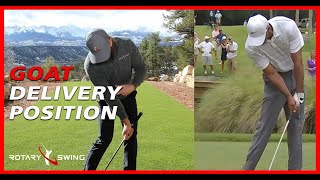
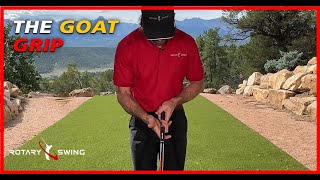
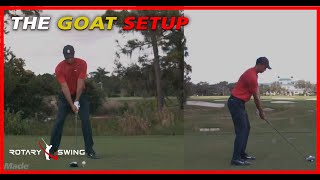
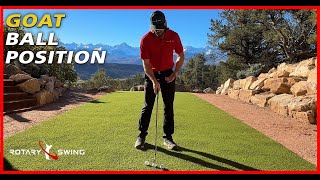
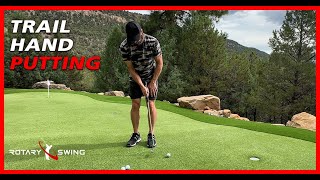

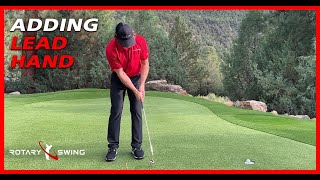

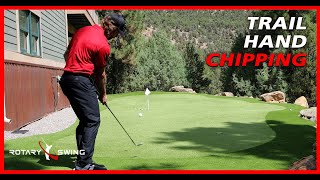
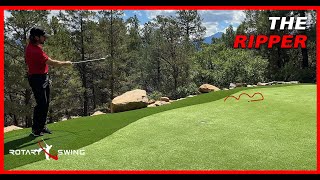
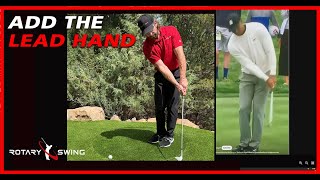




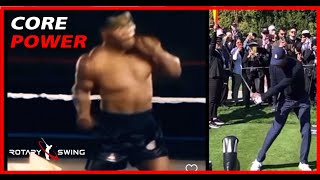
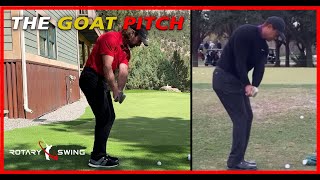
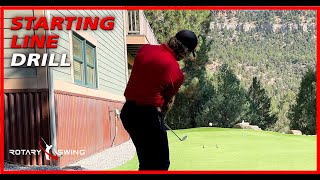
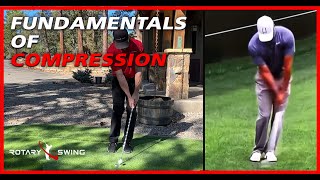
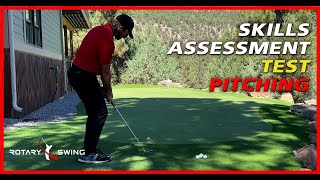
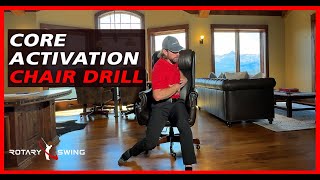
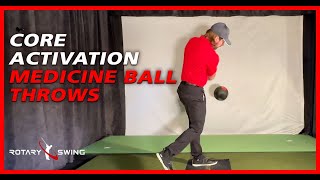
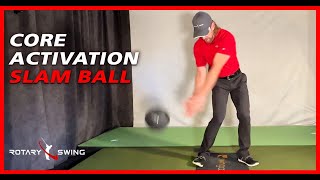
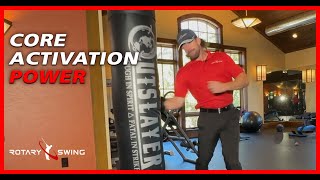
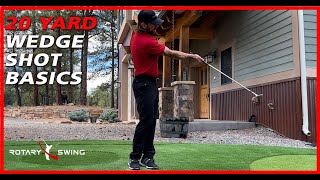
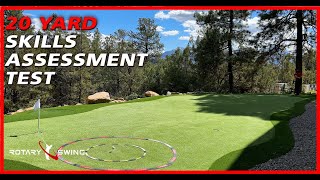
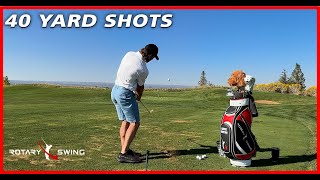
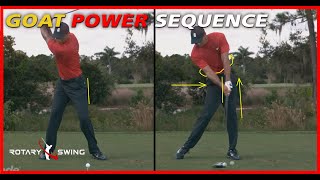
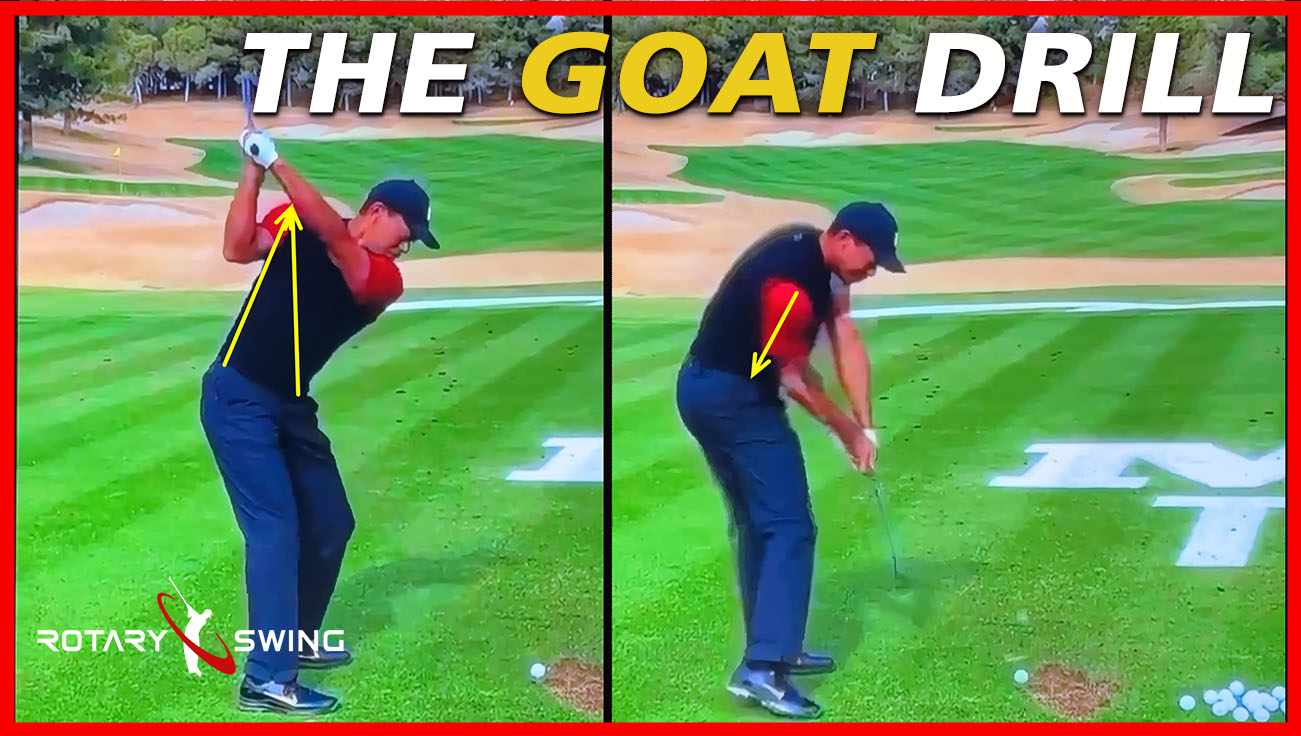
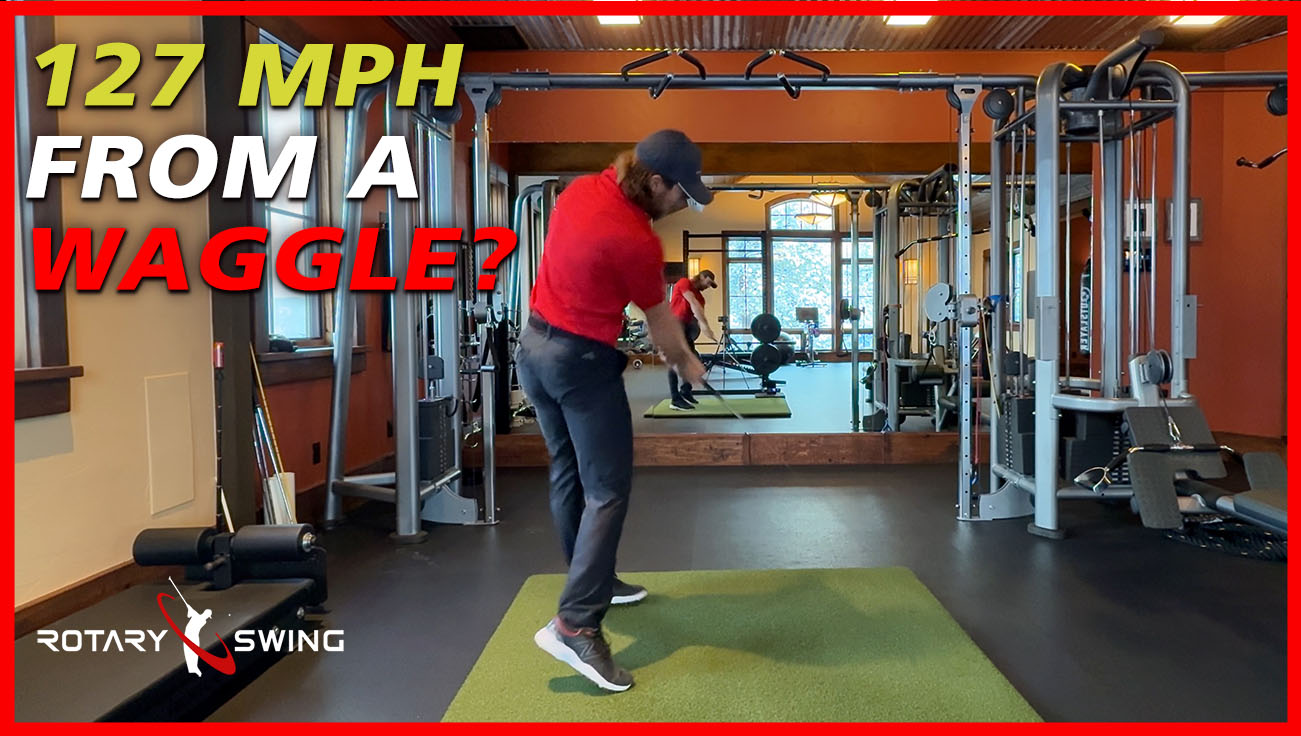
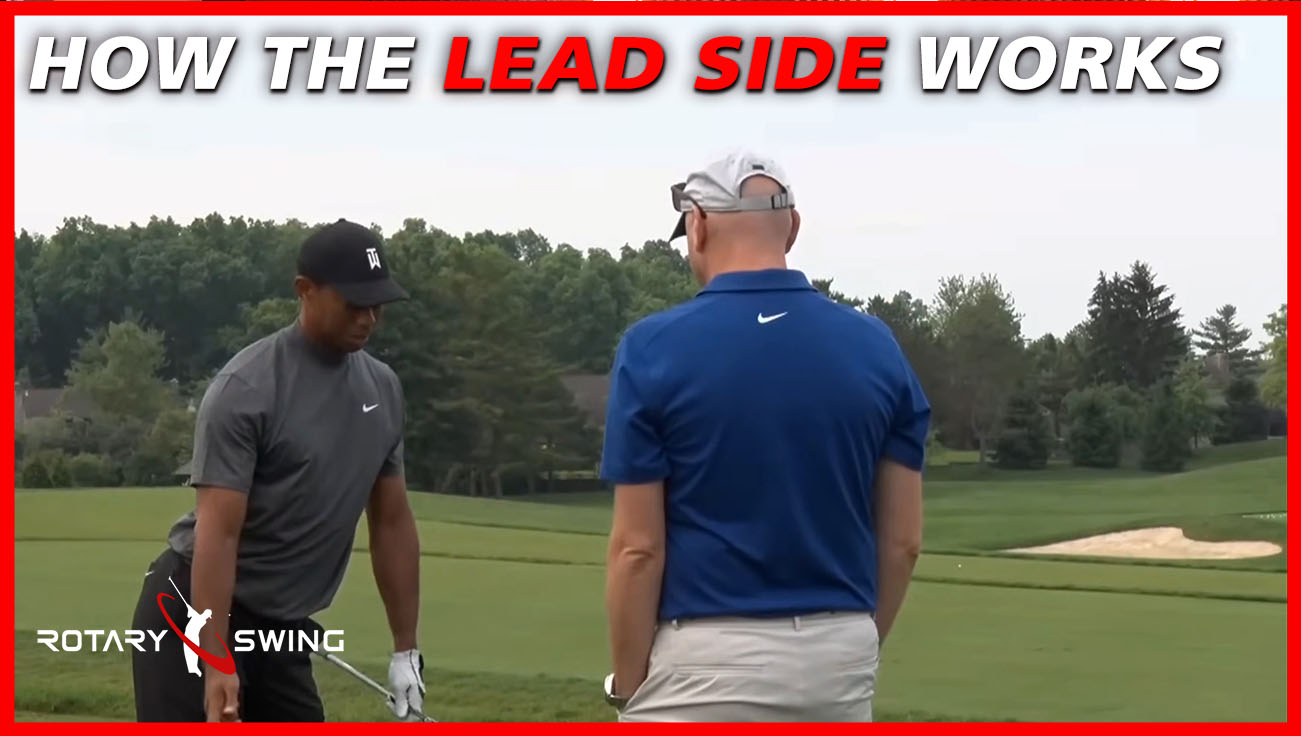
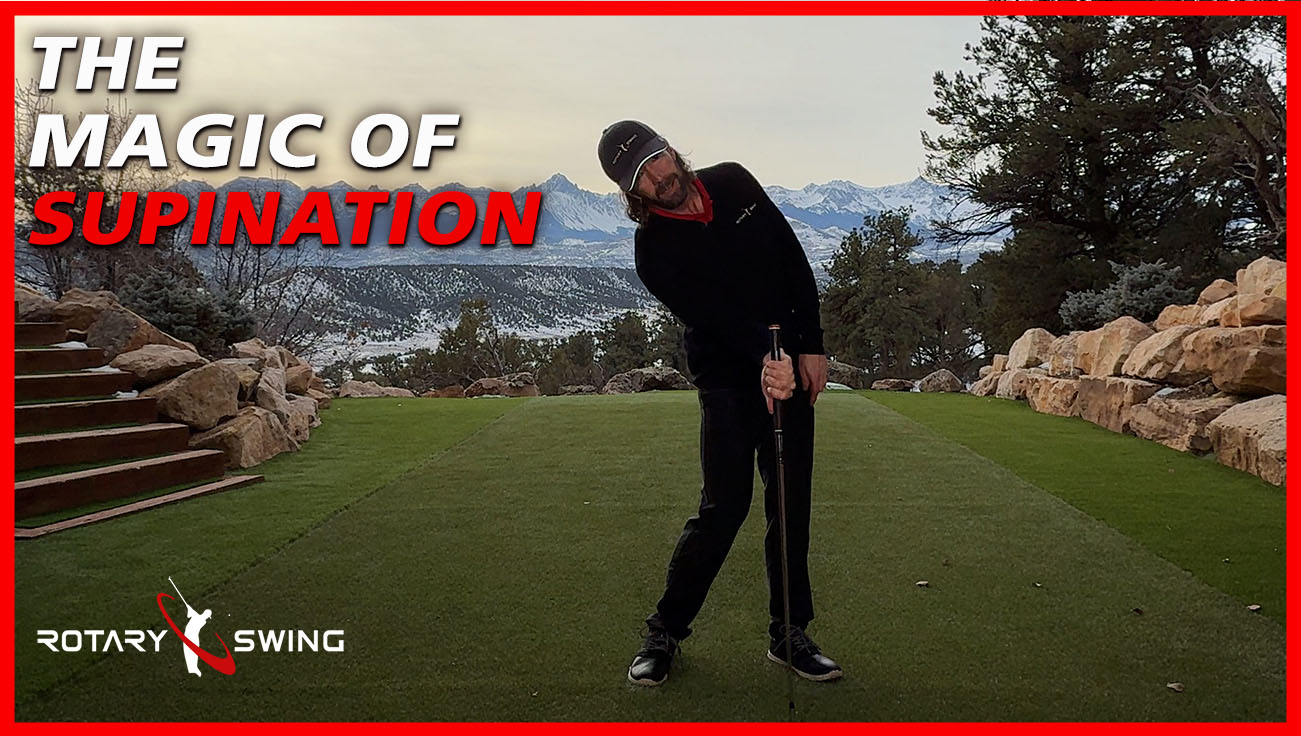
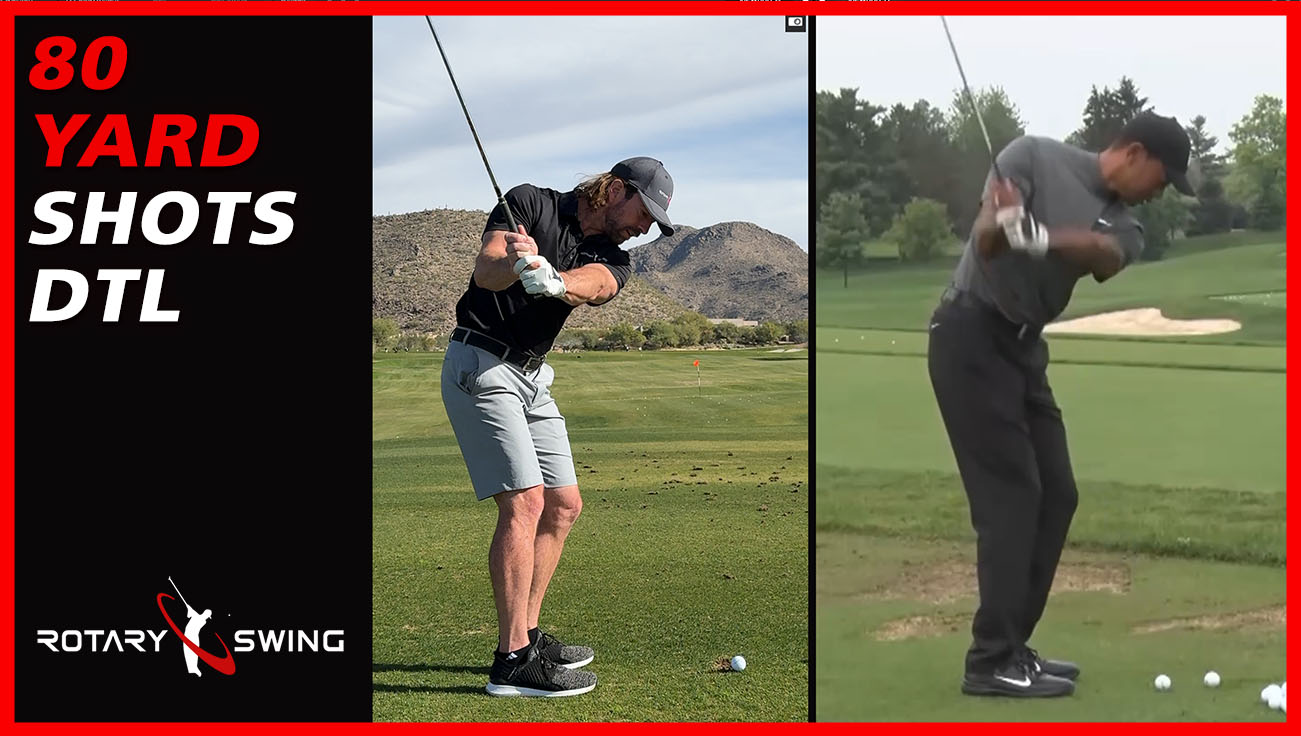
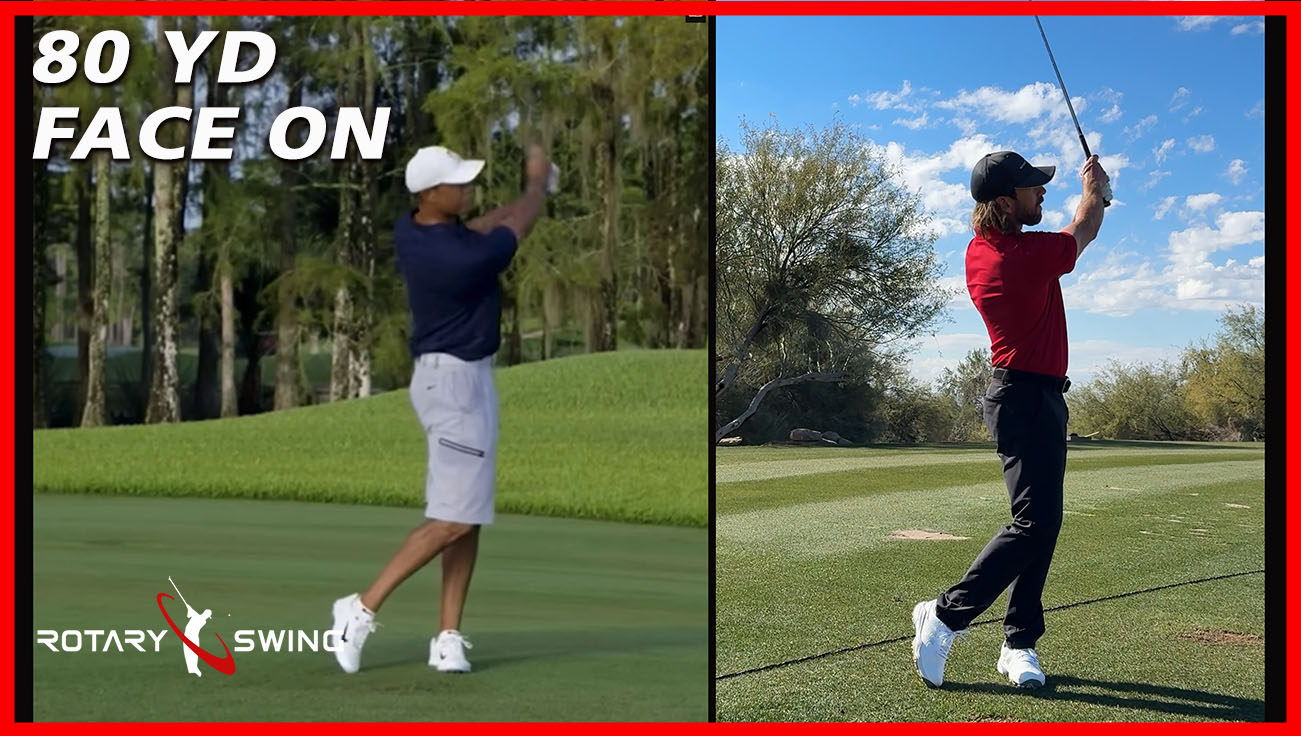
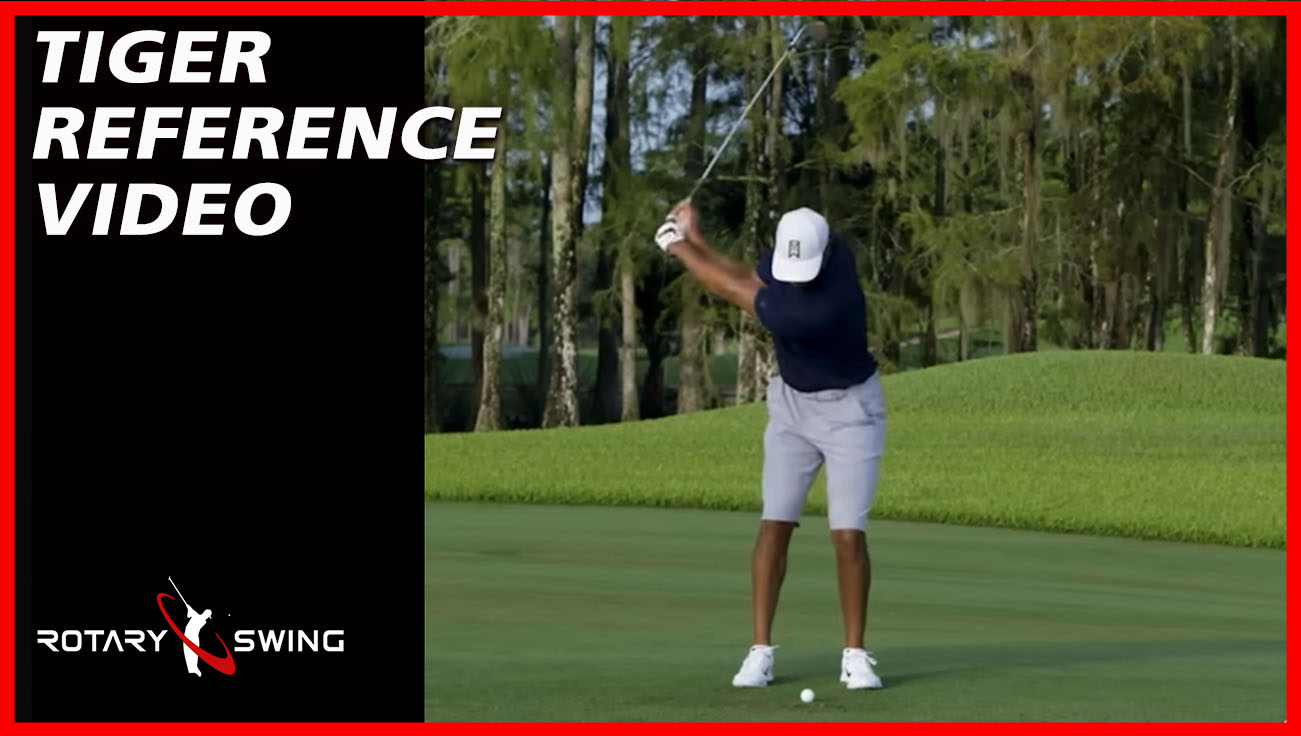

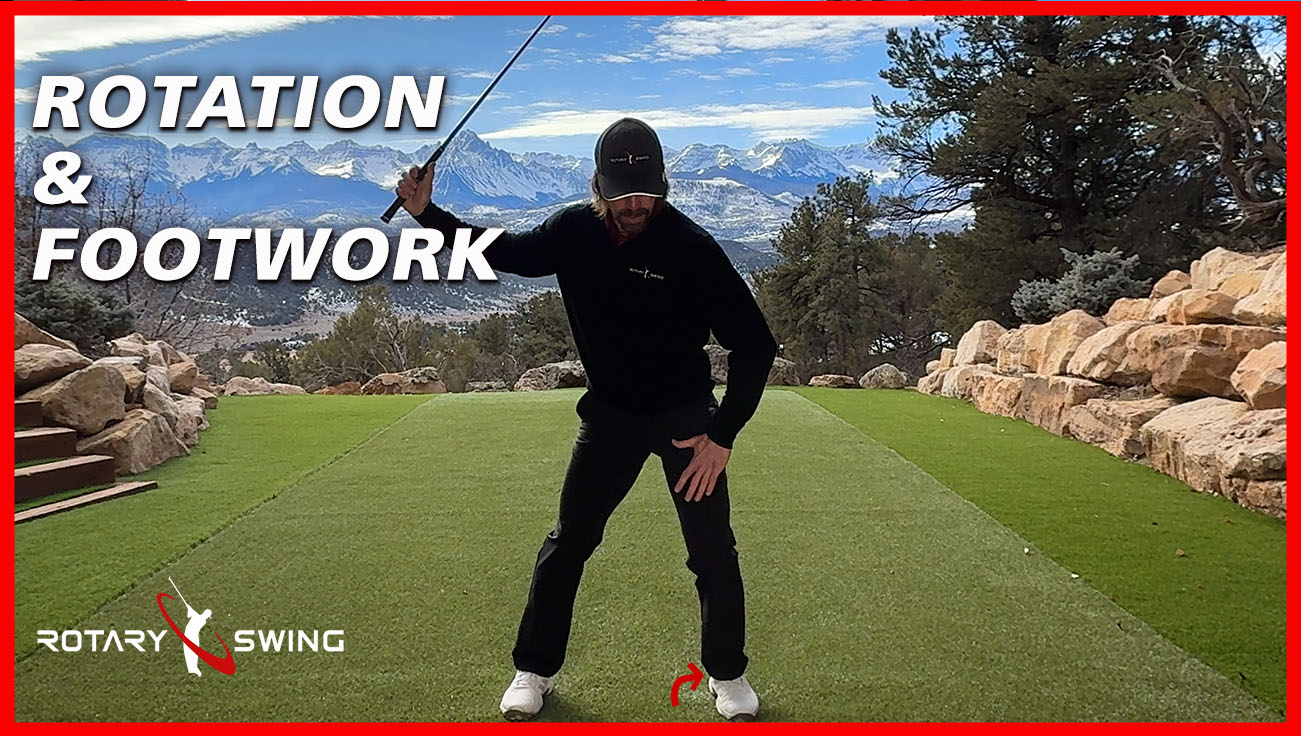
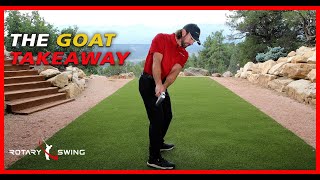

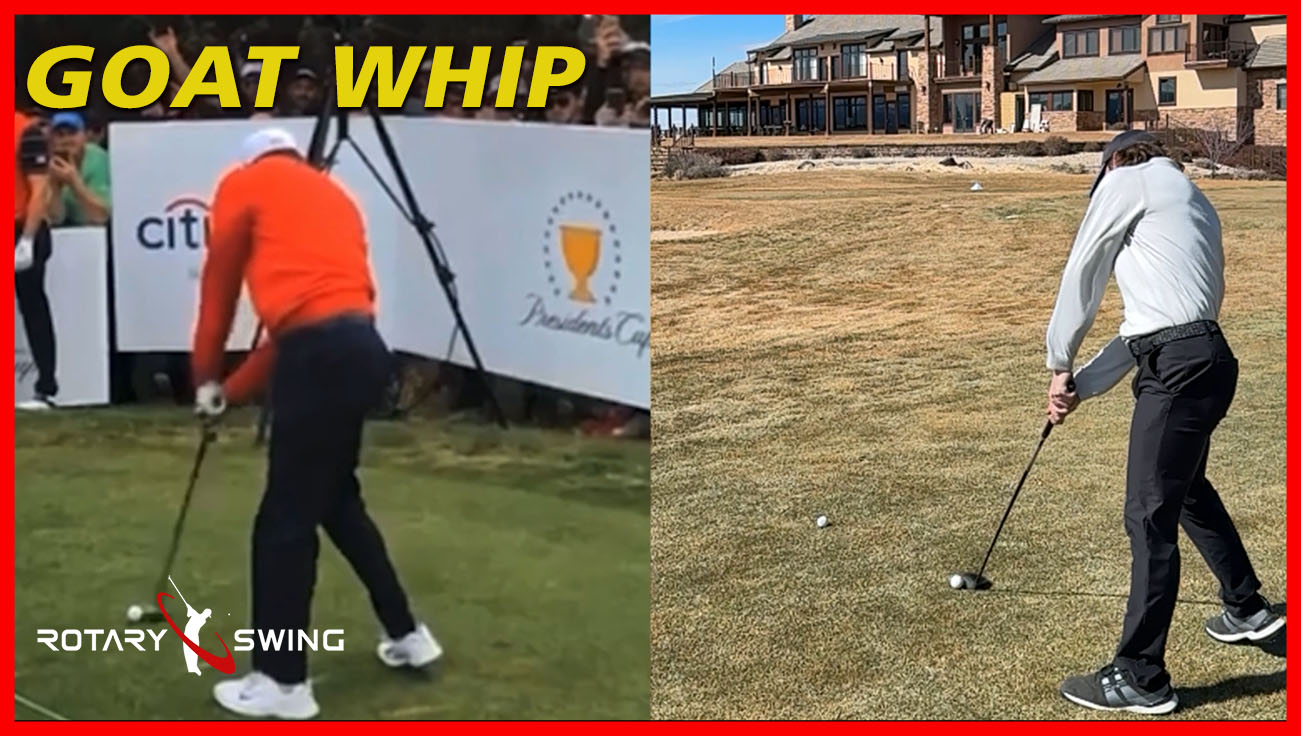
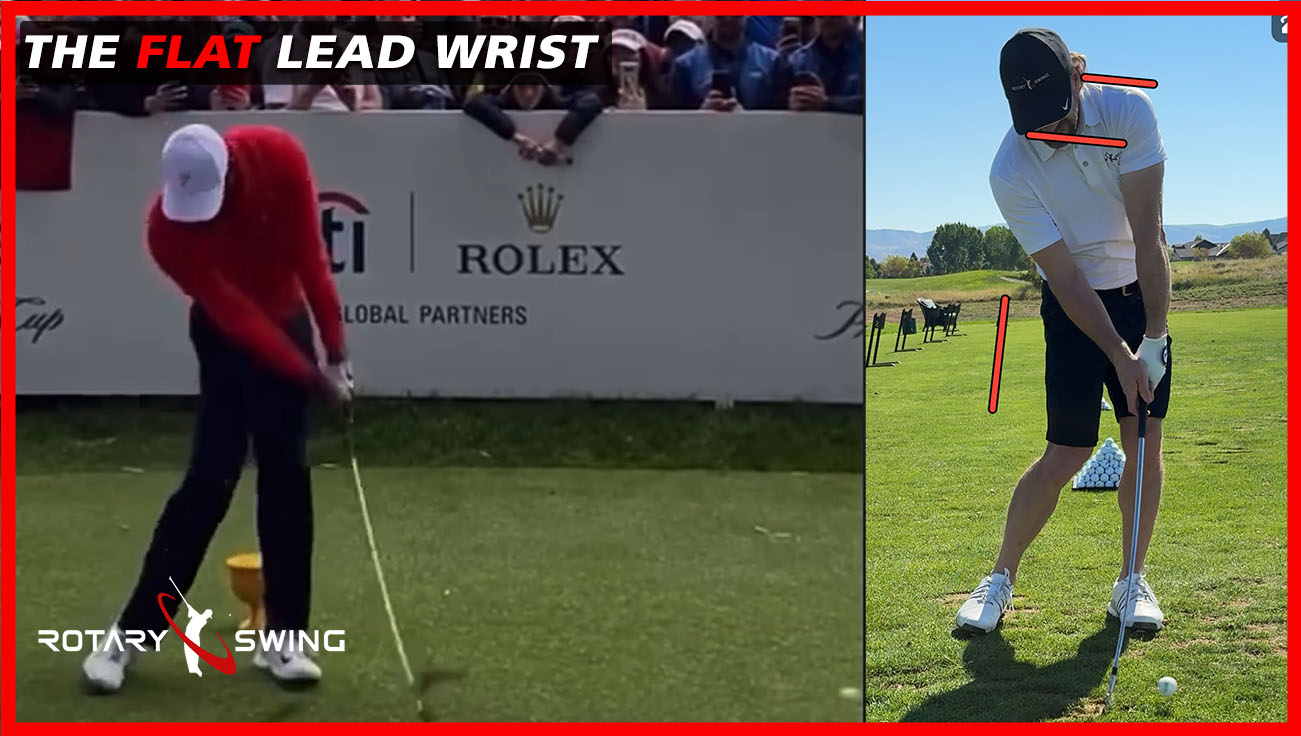
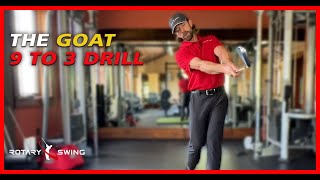
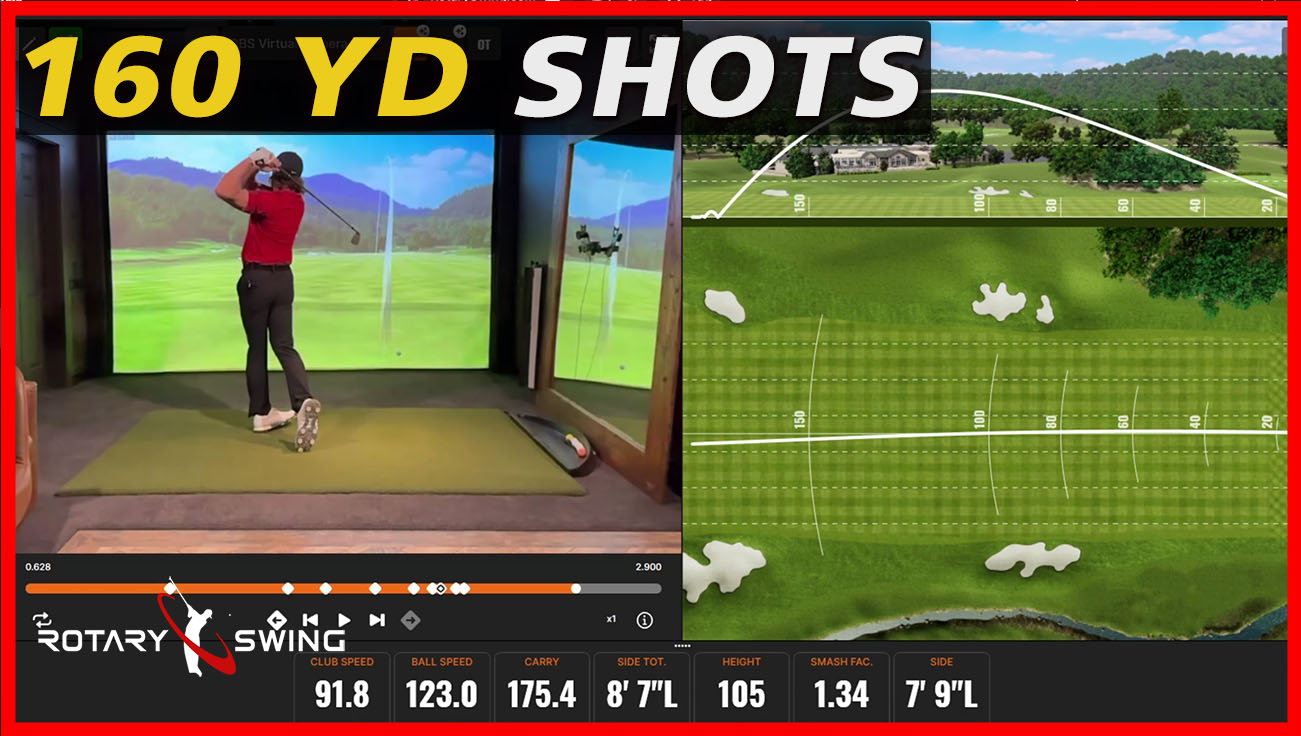

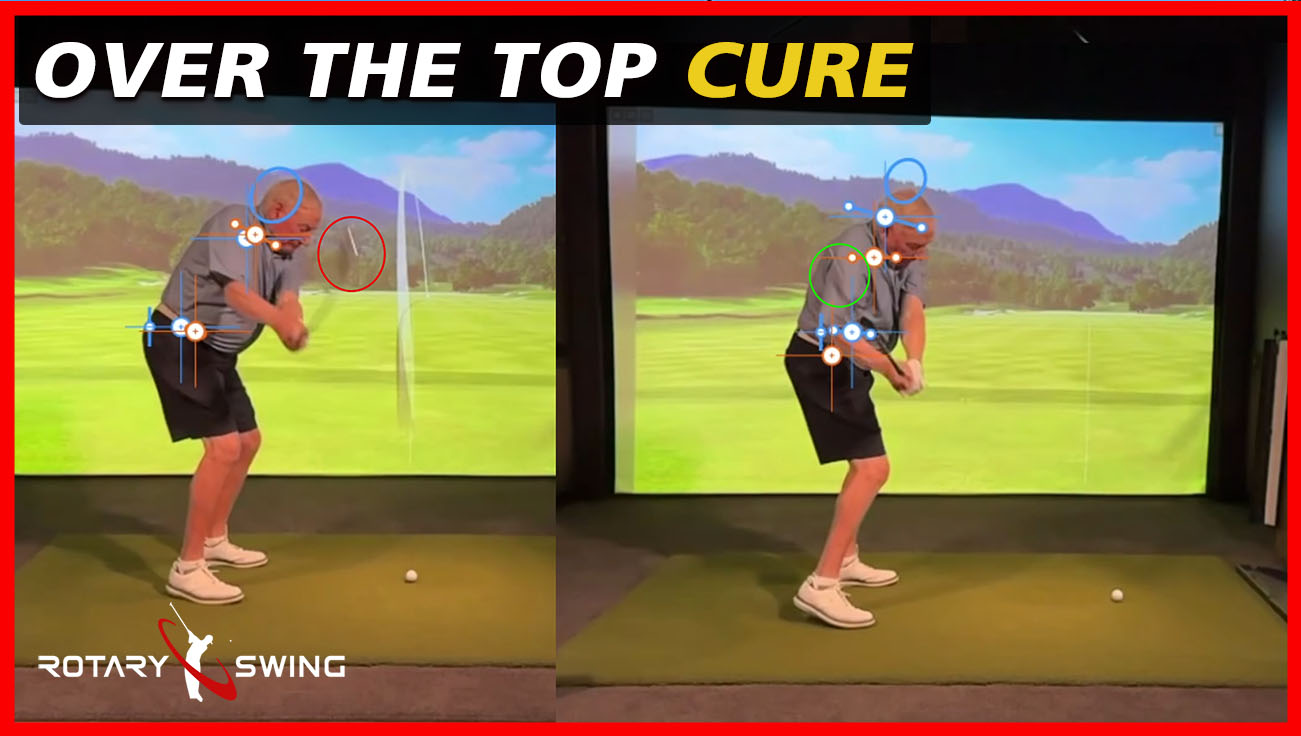
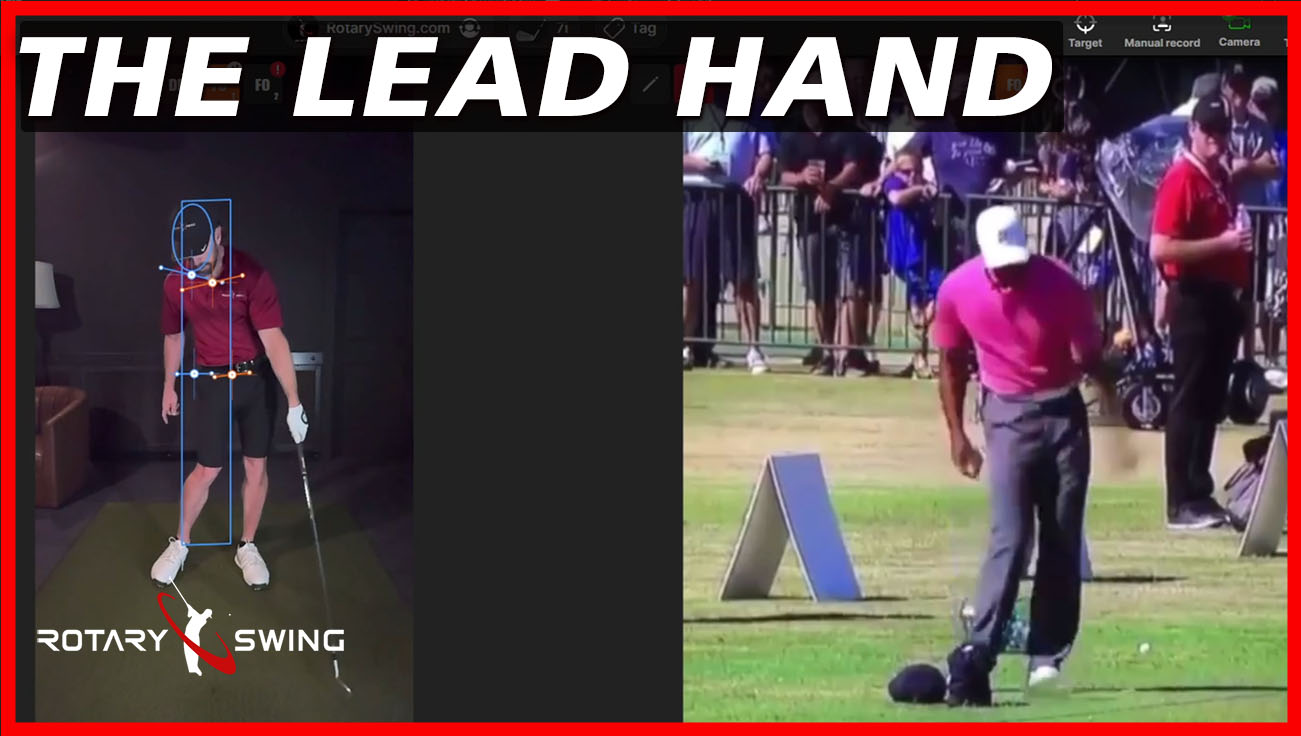
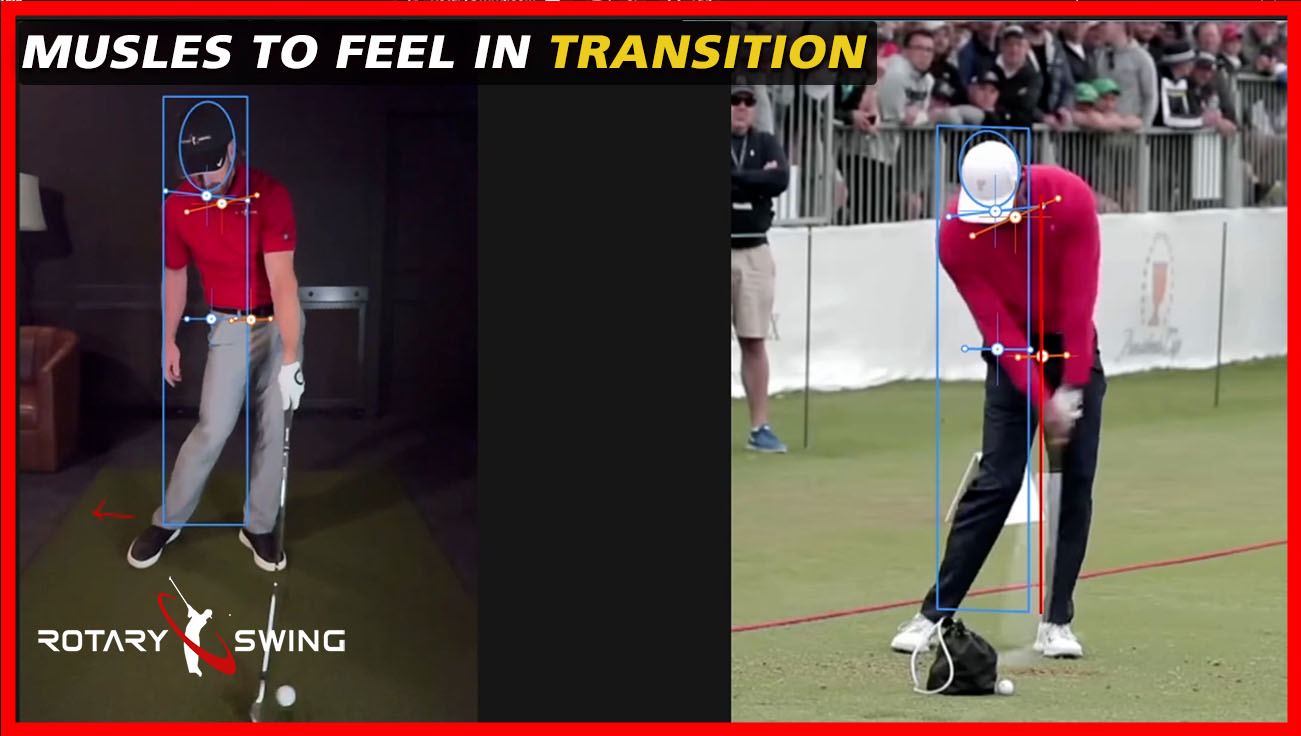
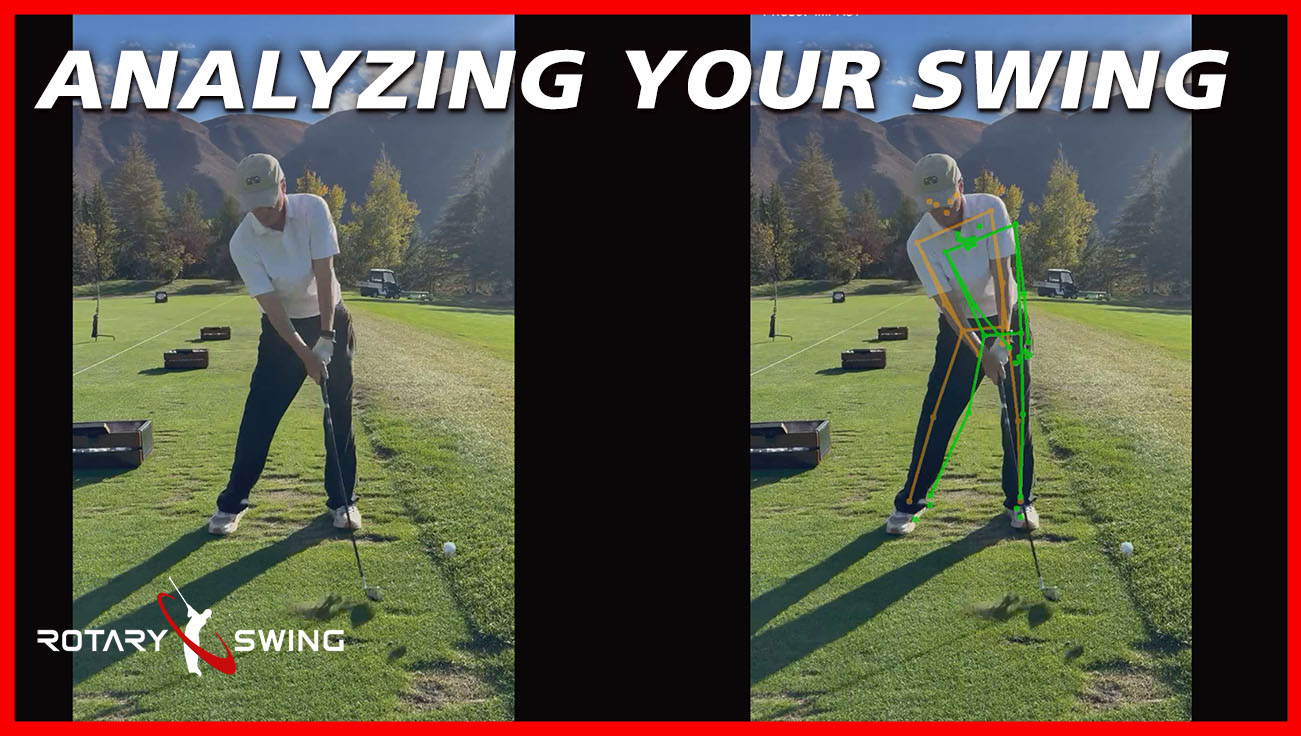

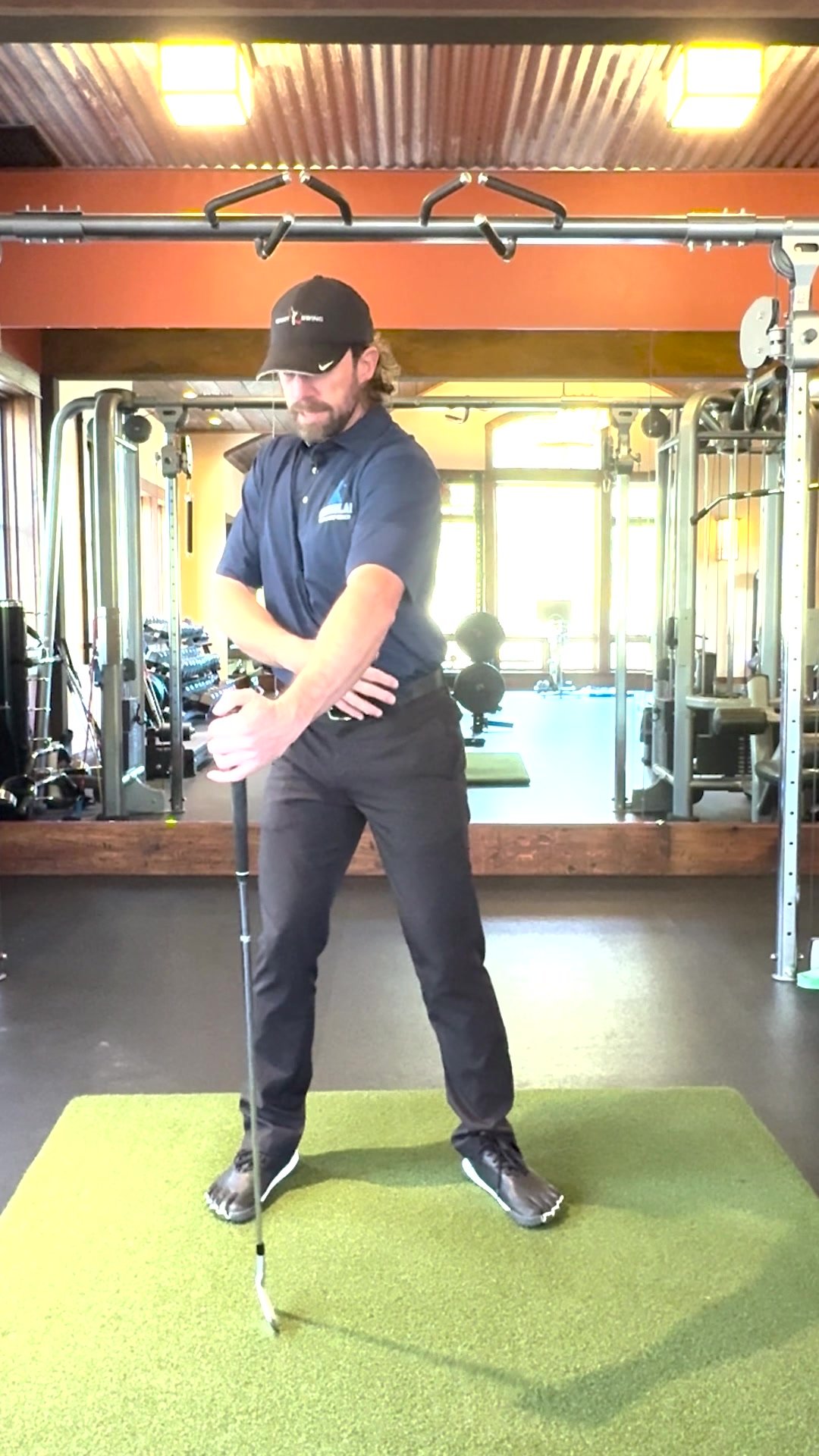

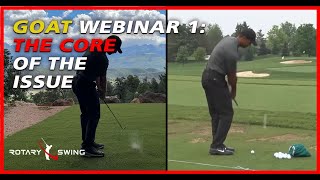
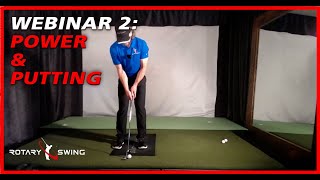
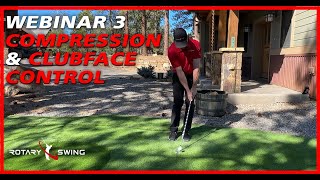
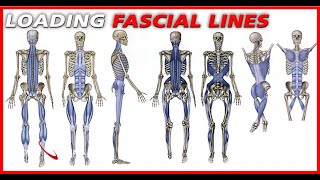
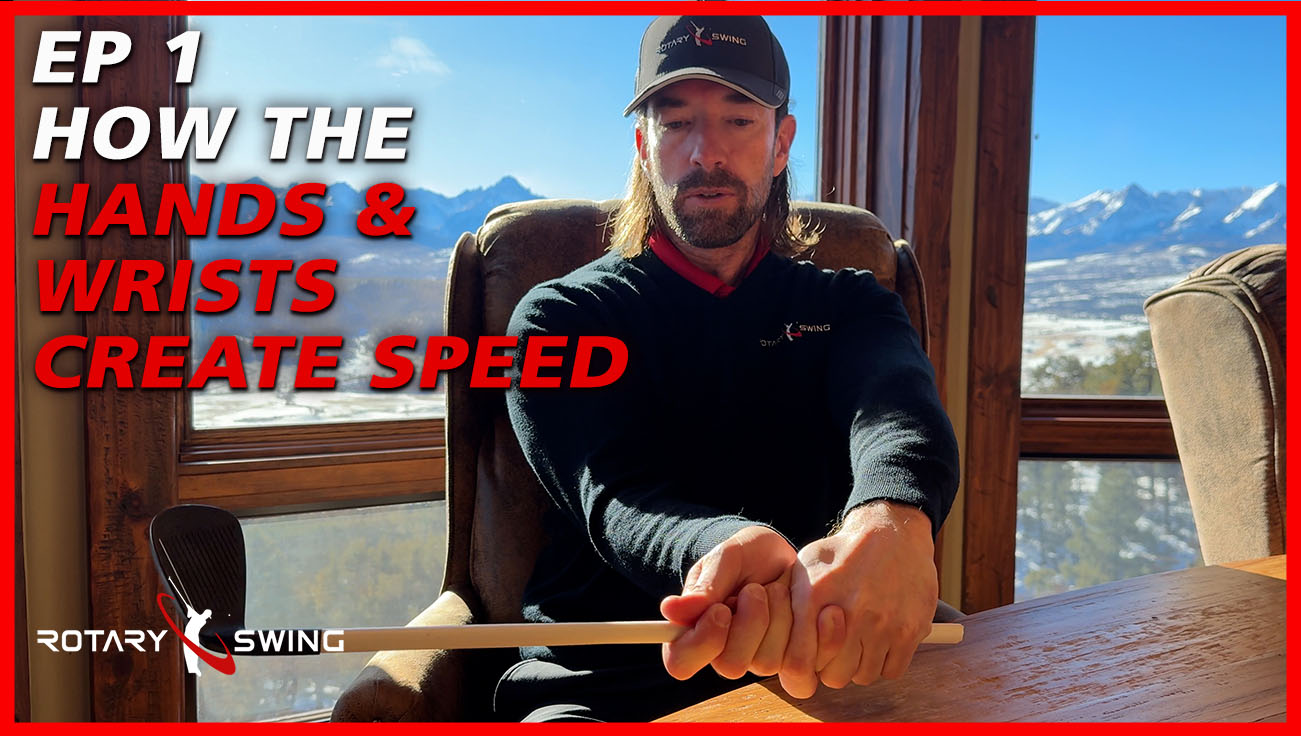

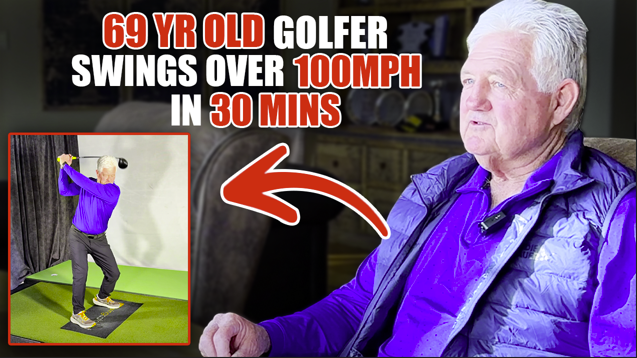
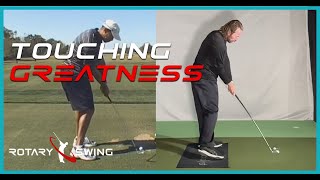



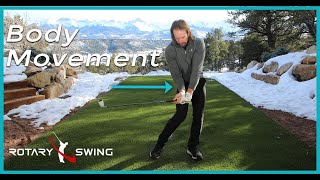

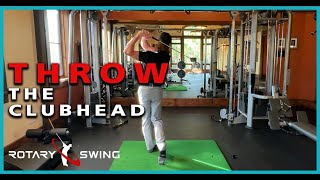
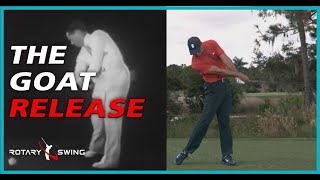
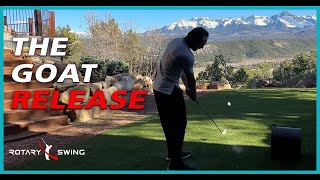
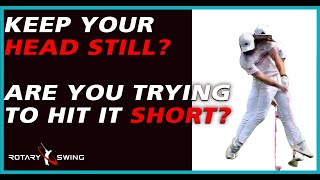
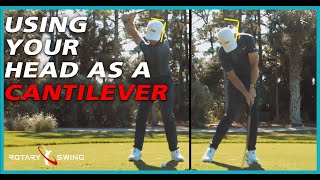
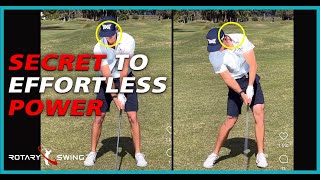
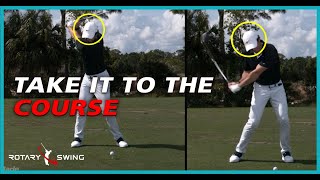

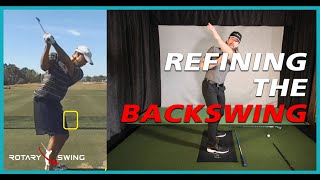

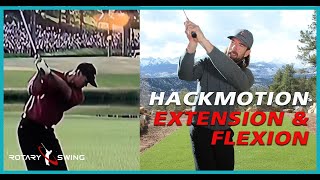
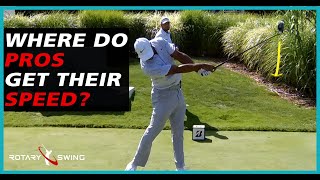
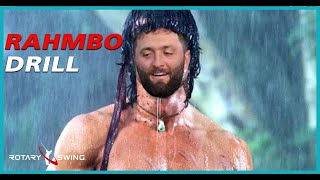

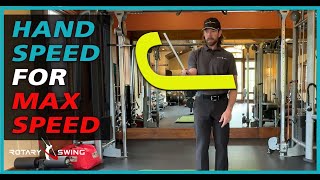
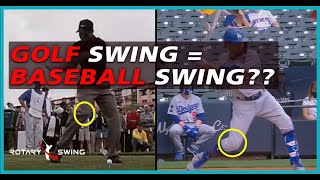
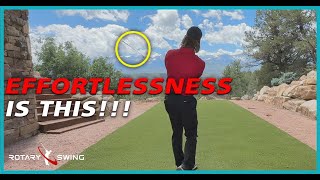

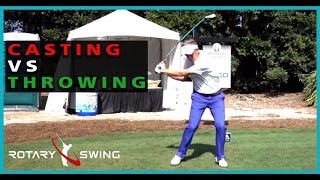
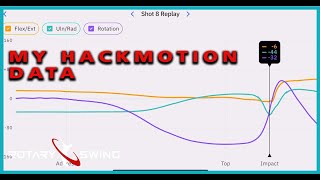
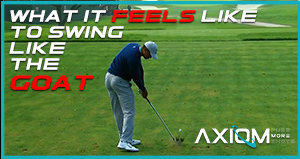



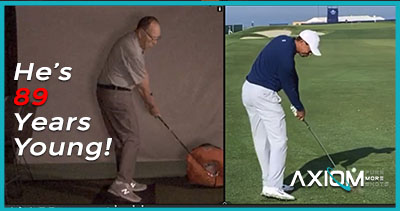

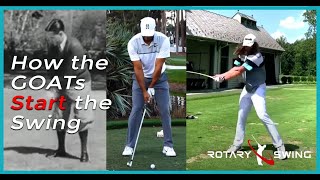
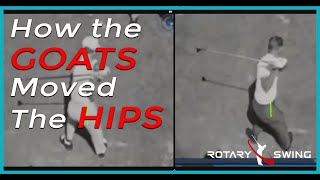
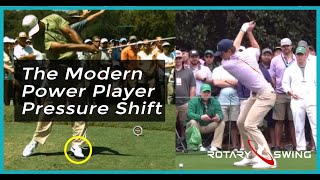
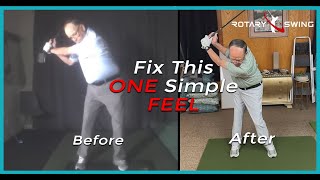
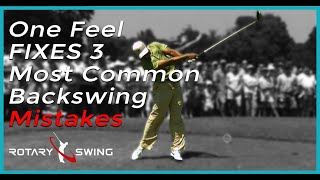
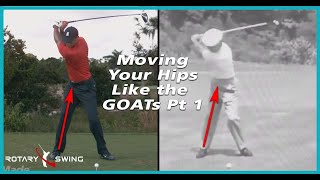
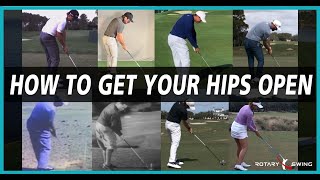

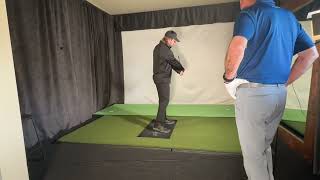
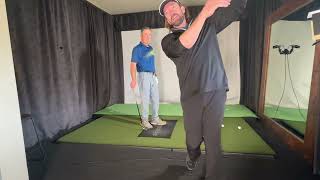
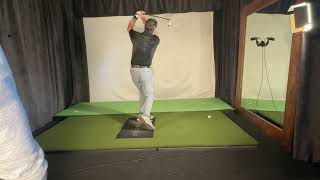
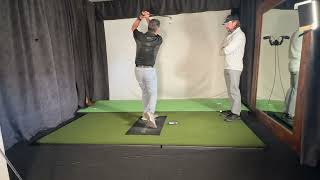
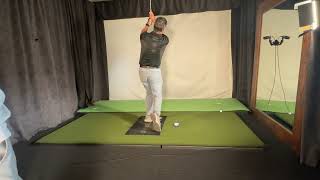
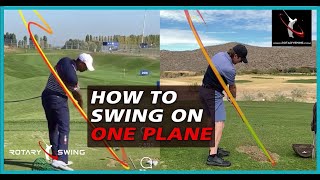
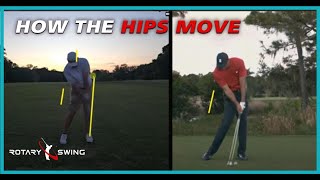
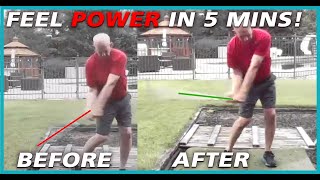
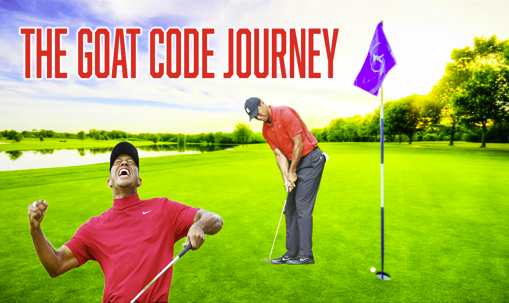
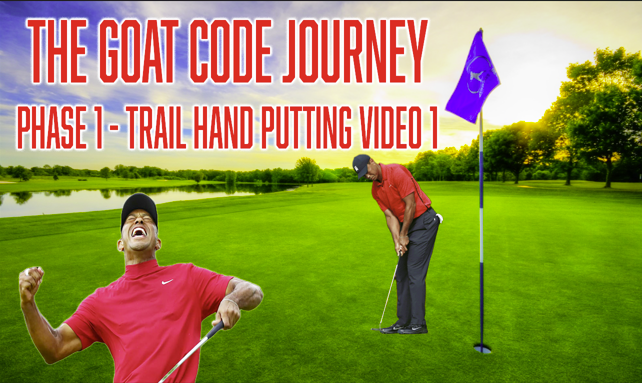
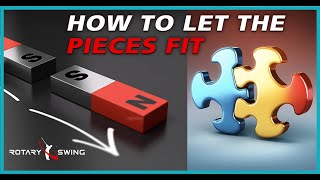


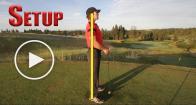
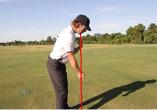
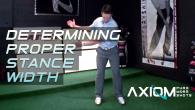
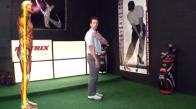
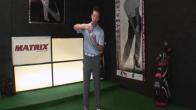
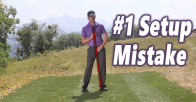

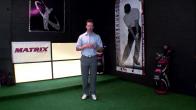
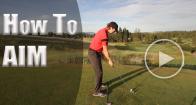
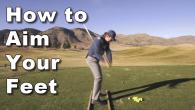
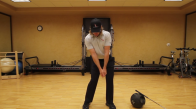
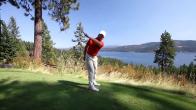
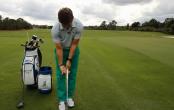

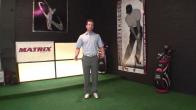


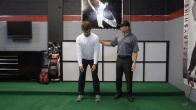

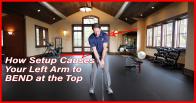


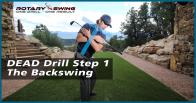
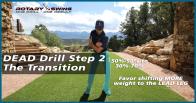
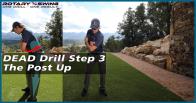

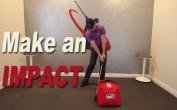
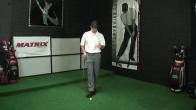
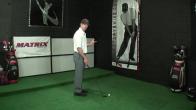
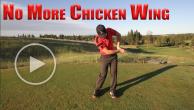
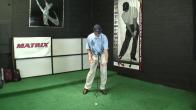


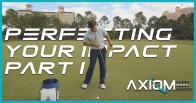
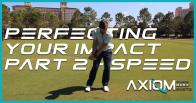
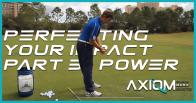
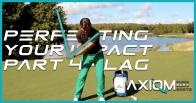

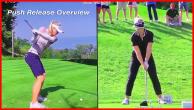

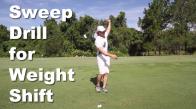


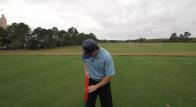
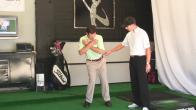
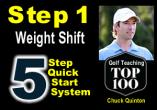
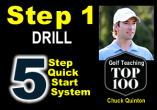
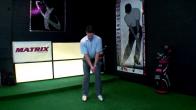
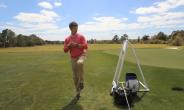

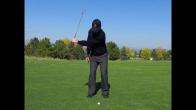
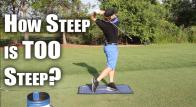
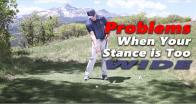
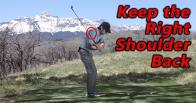

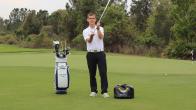
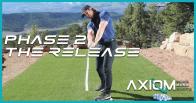
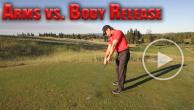
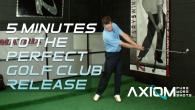



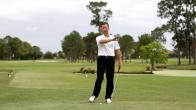
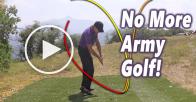
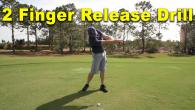
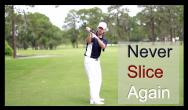
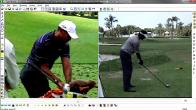
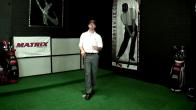
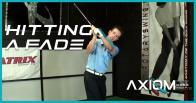
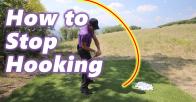
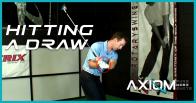


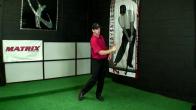
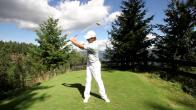

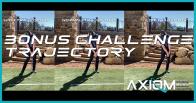
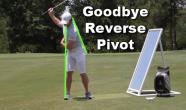
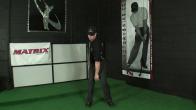
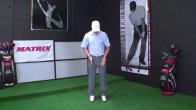
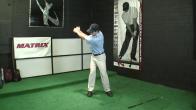
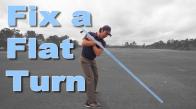
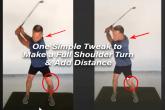
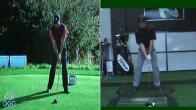
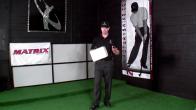

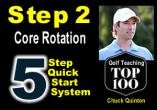
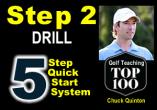
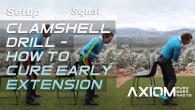

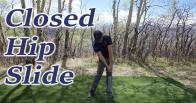

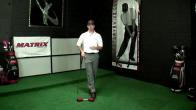
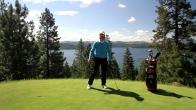
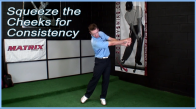
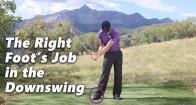
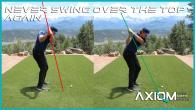
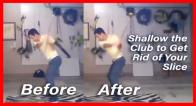


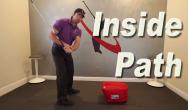

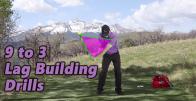

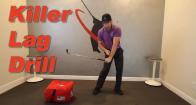
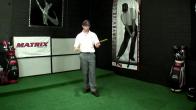
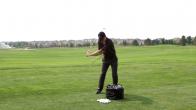
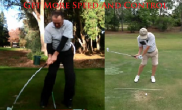


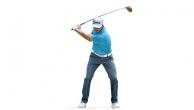
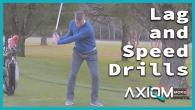
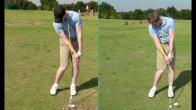


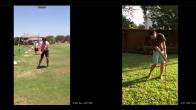



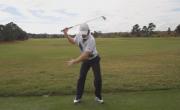
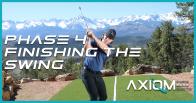
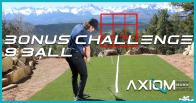







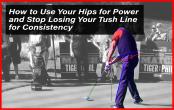
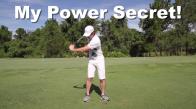
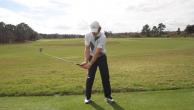
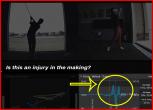
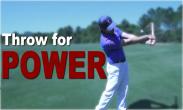


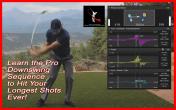
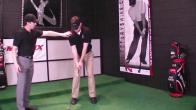
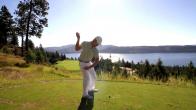

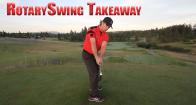


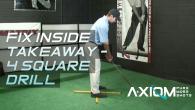
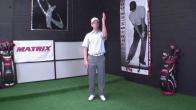
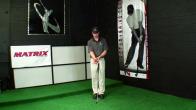


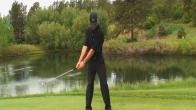
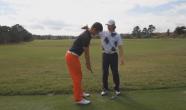
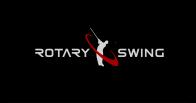
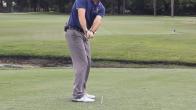

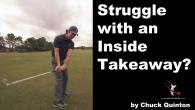


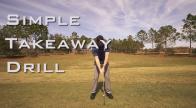

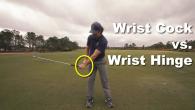
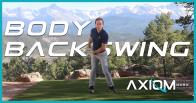

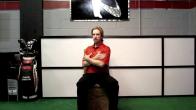
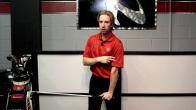


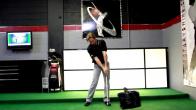
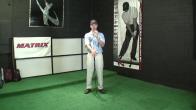
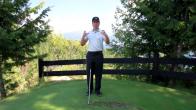

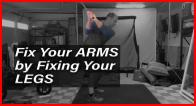
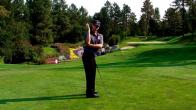
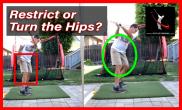
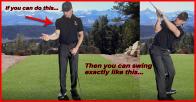

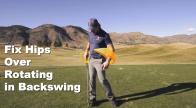
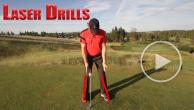
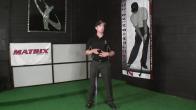

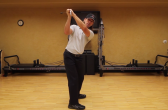
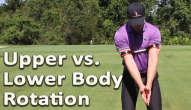
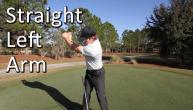


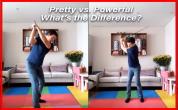

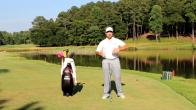




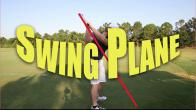
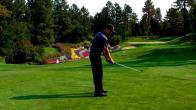

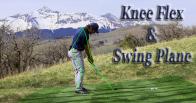
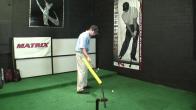

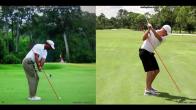






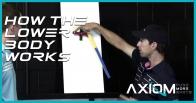
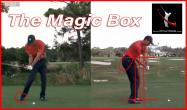
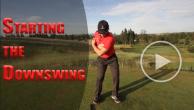

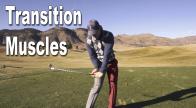


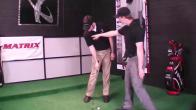
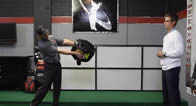
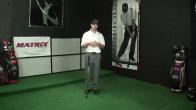
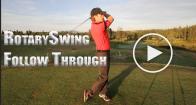
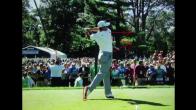
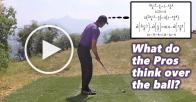
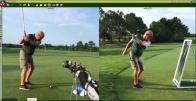


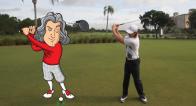
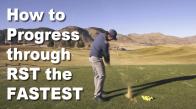
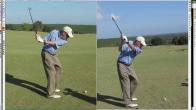


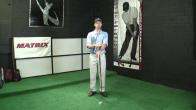
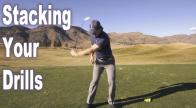
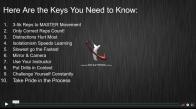
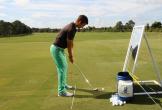

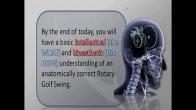
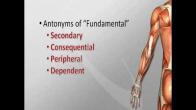
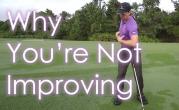
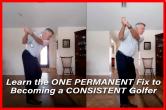

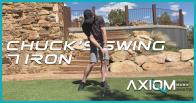



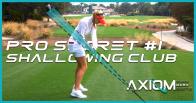
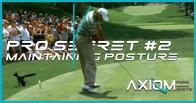

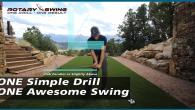

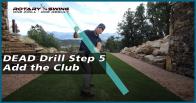

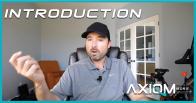

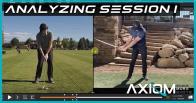

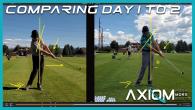
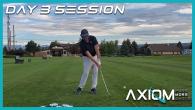

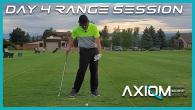

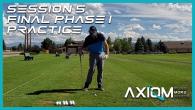


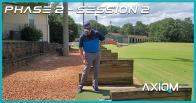
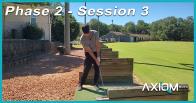
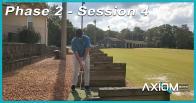
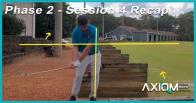
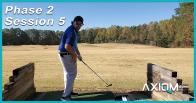

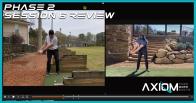
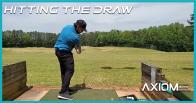


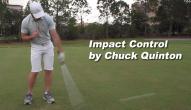









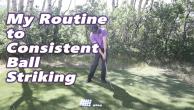

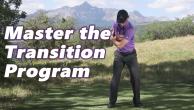
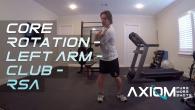
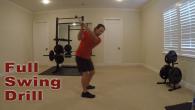
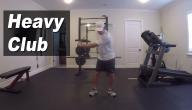
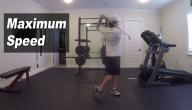
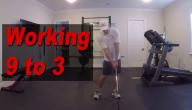
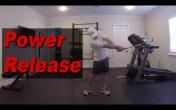
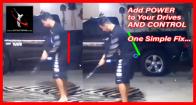
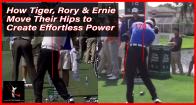
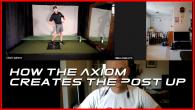
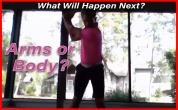
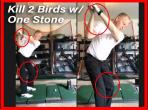
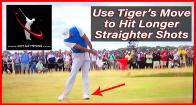

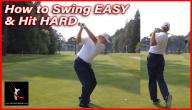
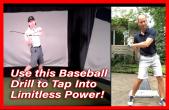
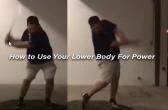
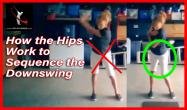
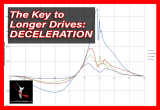
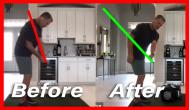
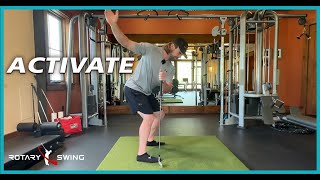
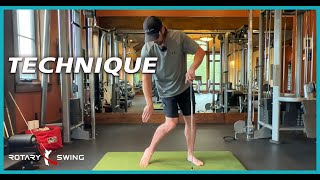
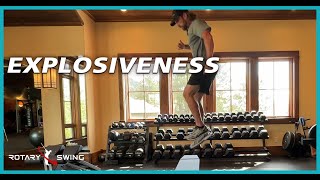
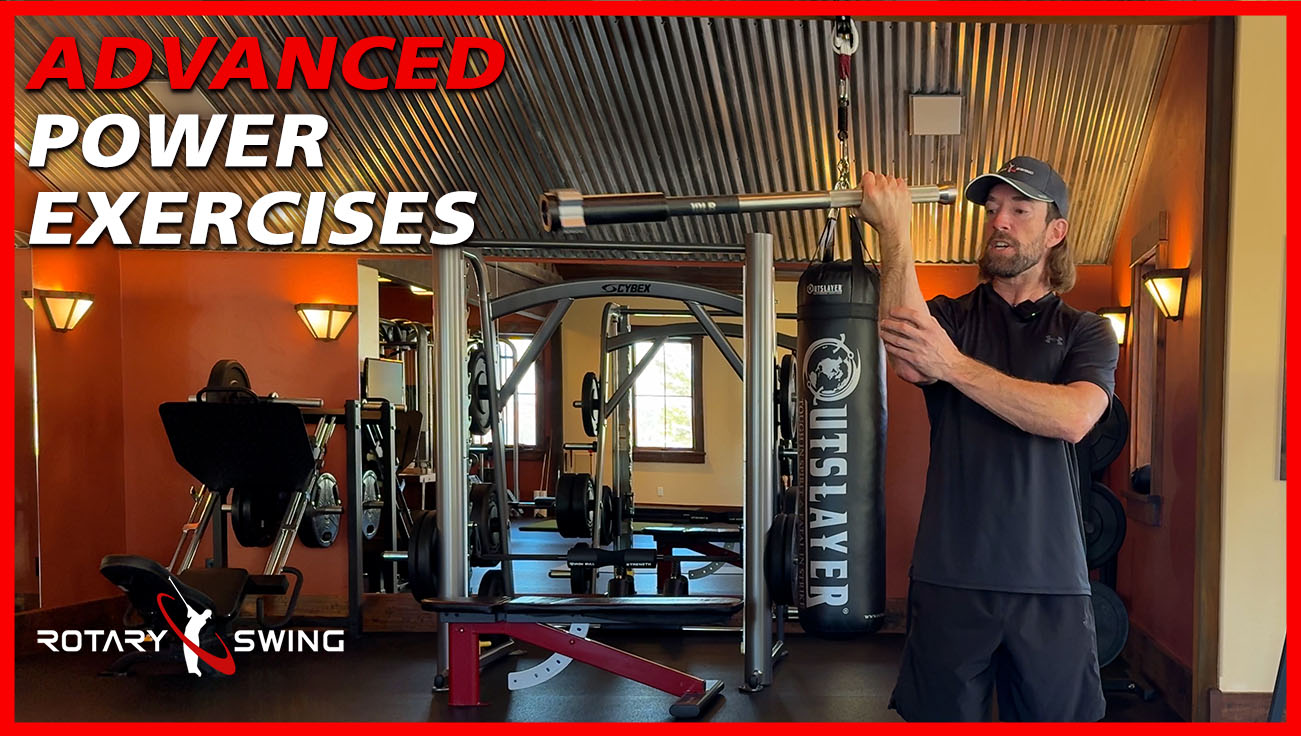
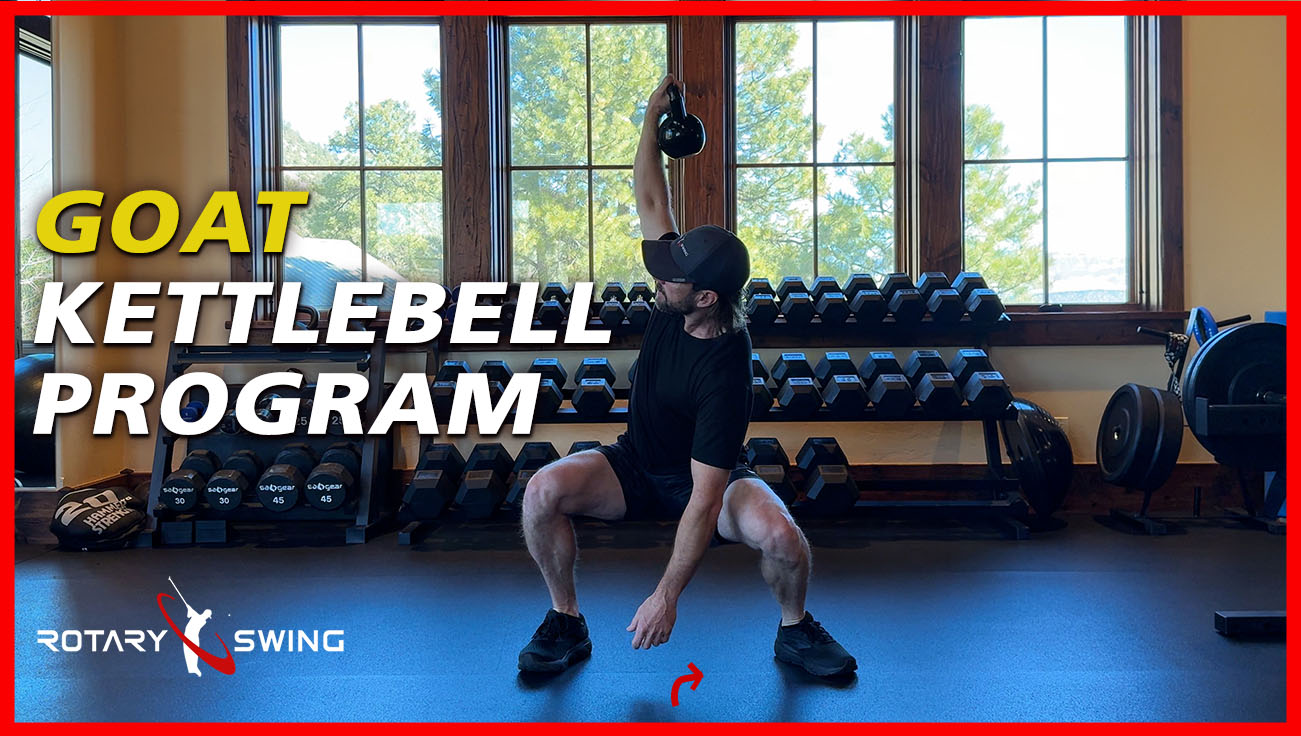

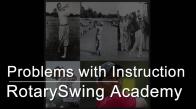
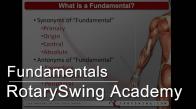
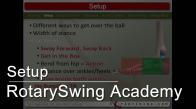


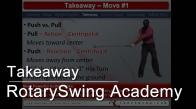
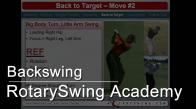
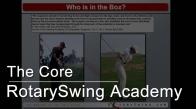
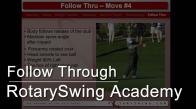



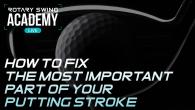

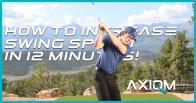
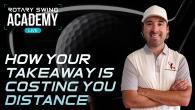
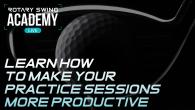
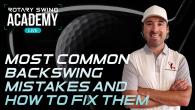
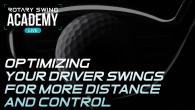
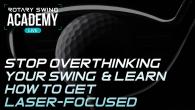



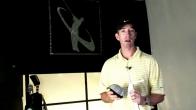
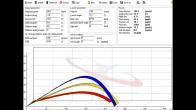

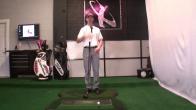
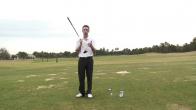
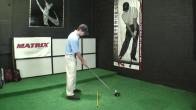
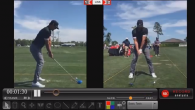


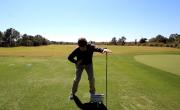

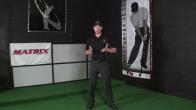
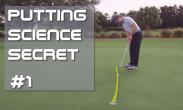
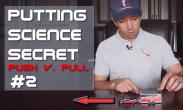

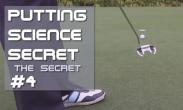
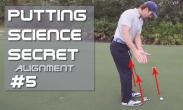
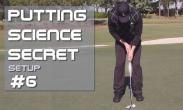
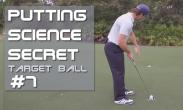
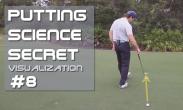






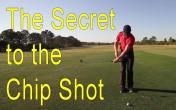
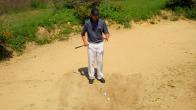

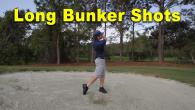

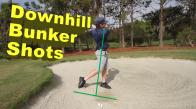
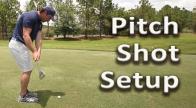

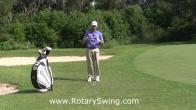
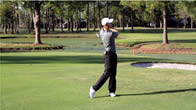
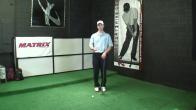
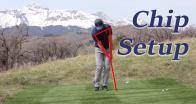


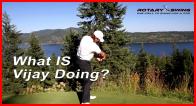





Richard
Chuck
Scott
Chuck
Gregory
Chuck
James
Chuck
Sean
Chuck
STEPHEN
Chuck
ogljr@charter.net
John
Dennis